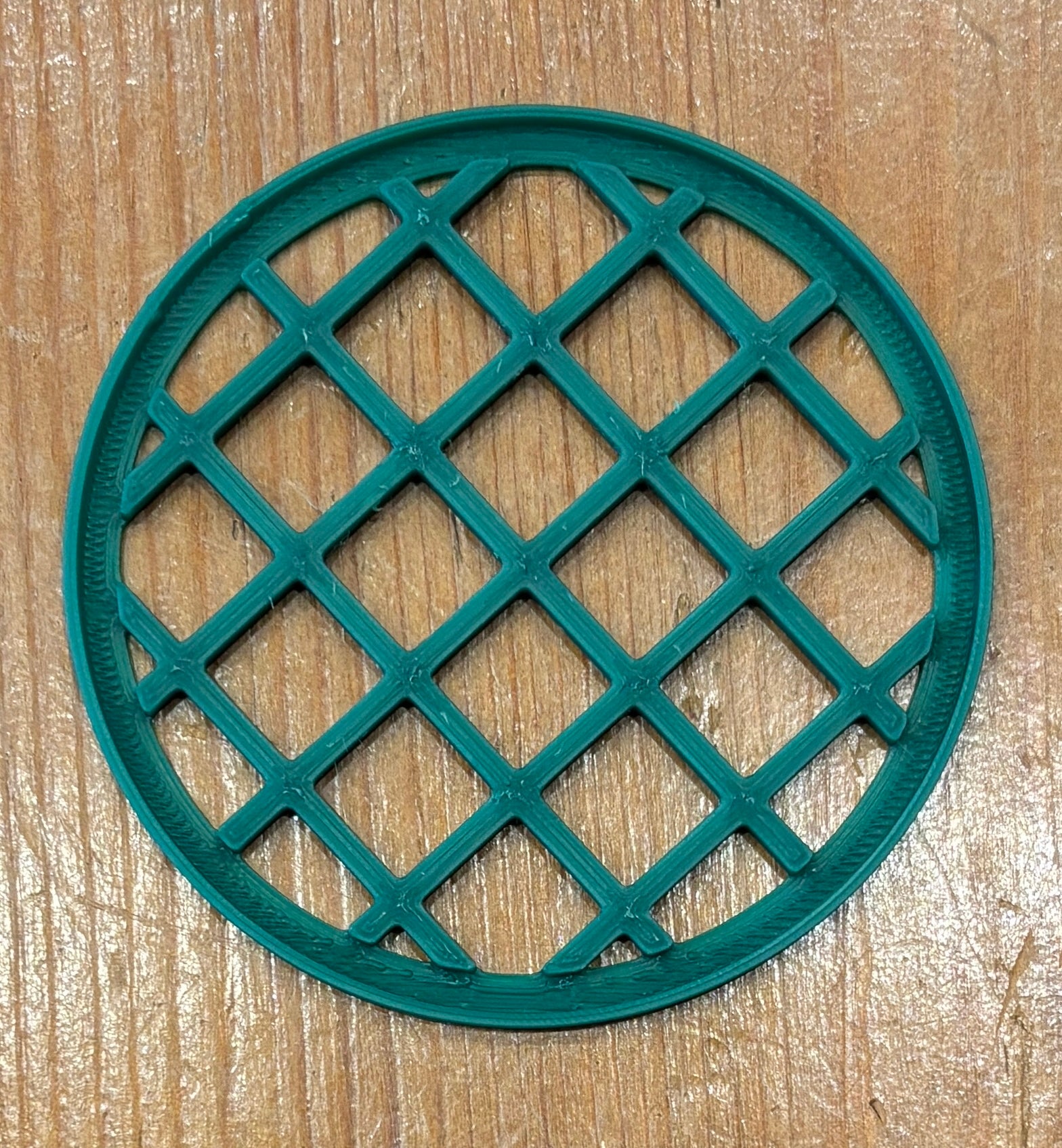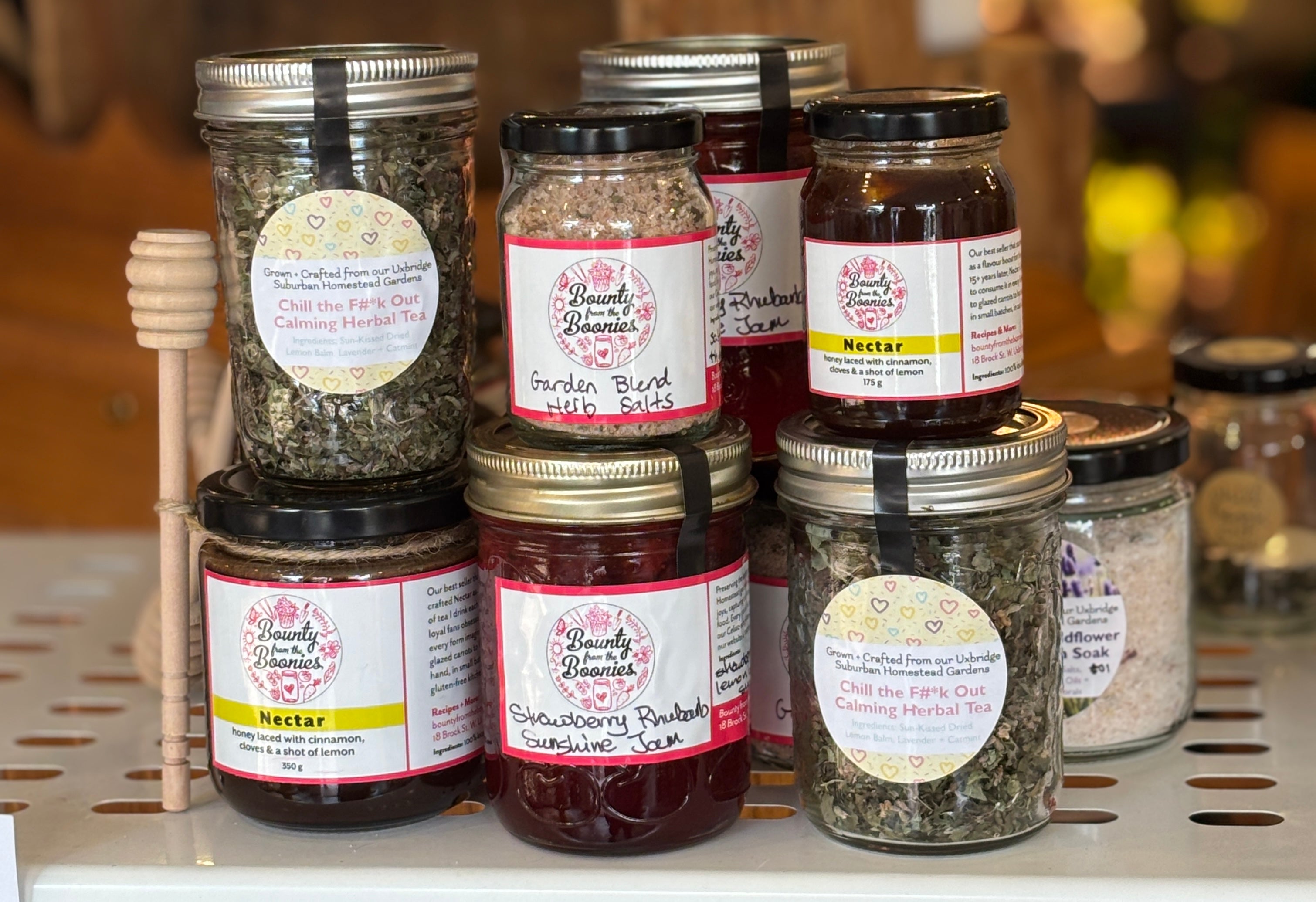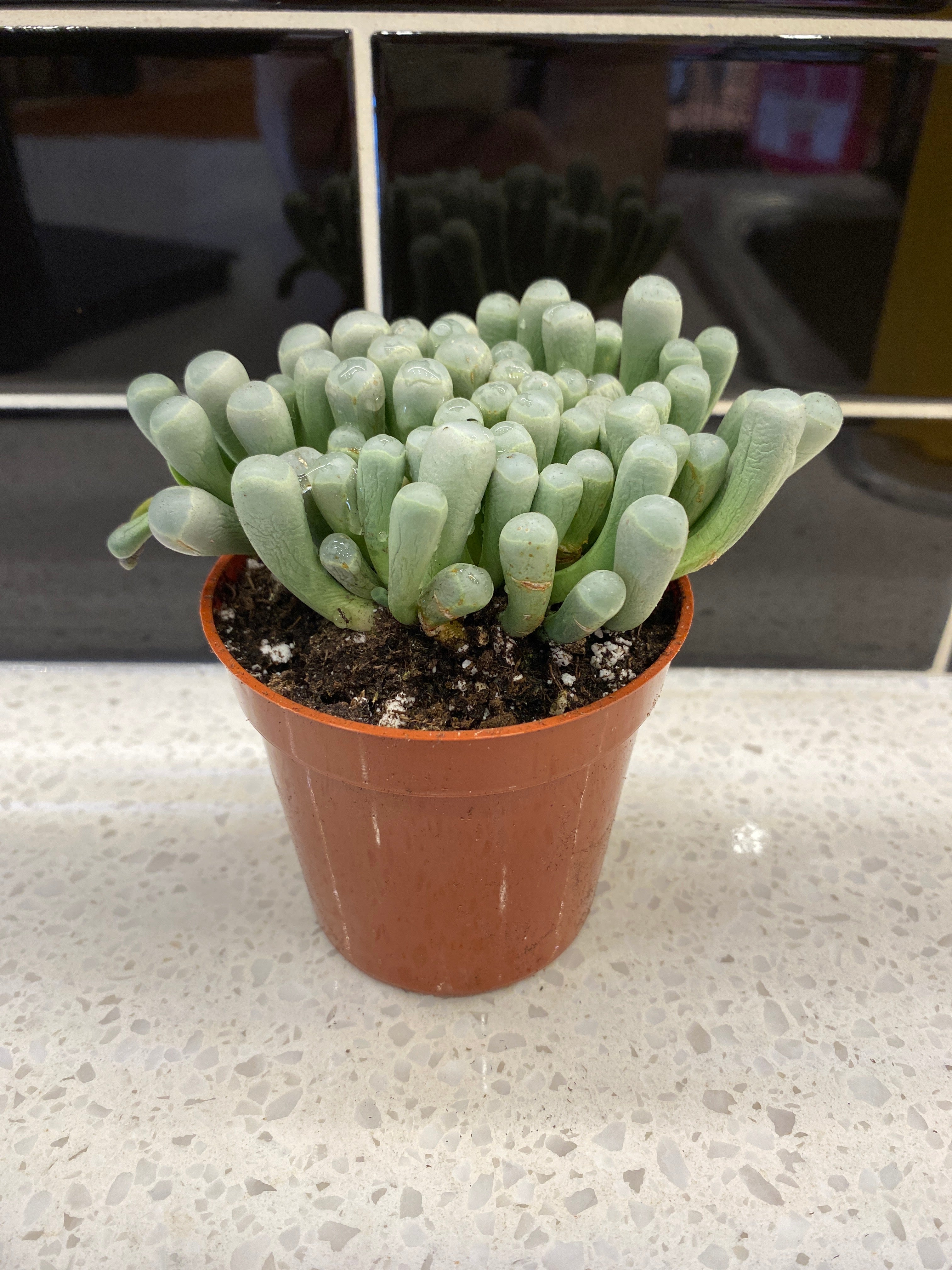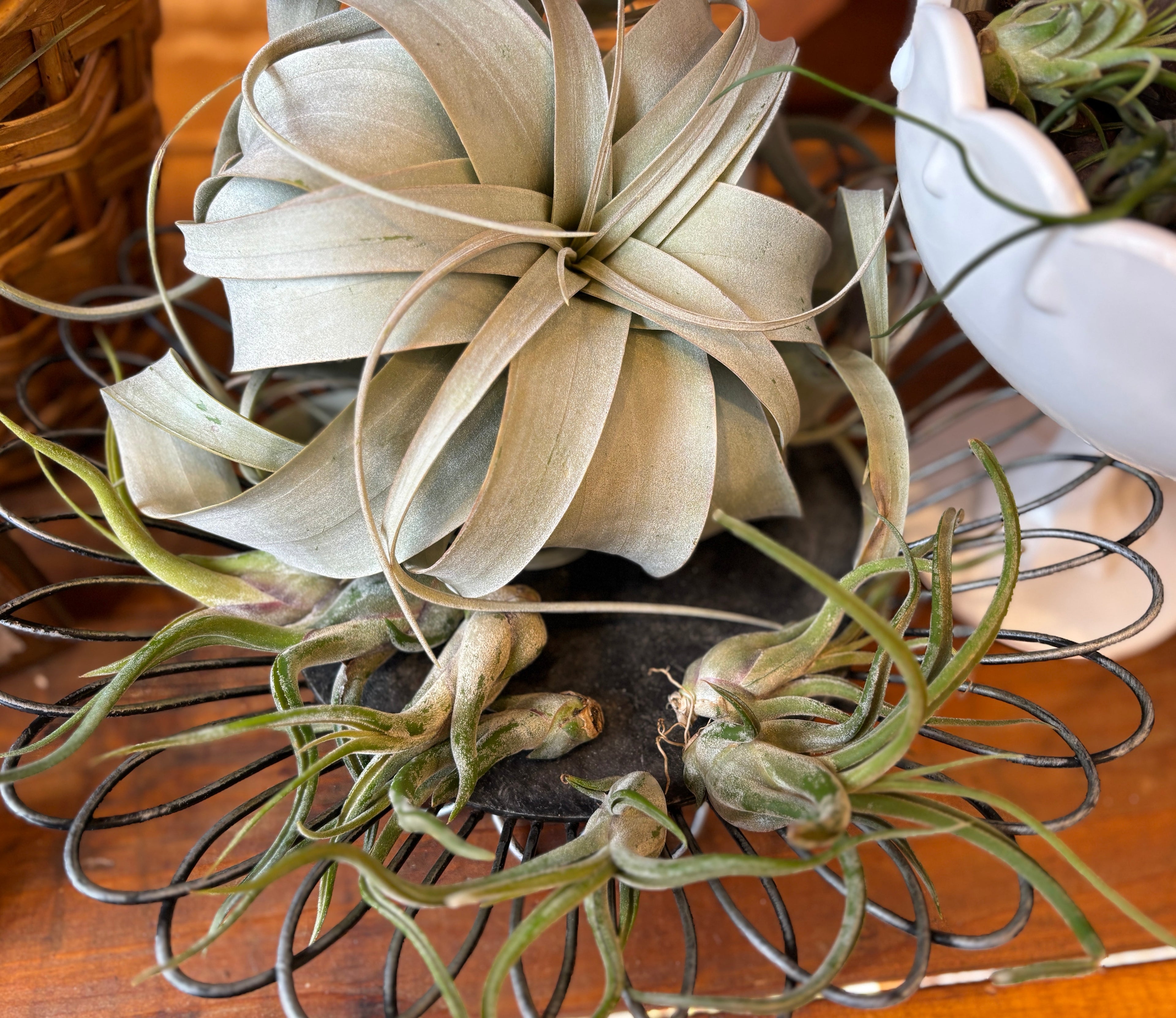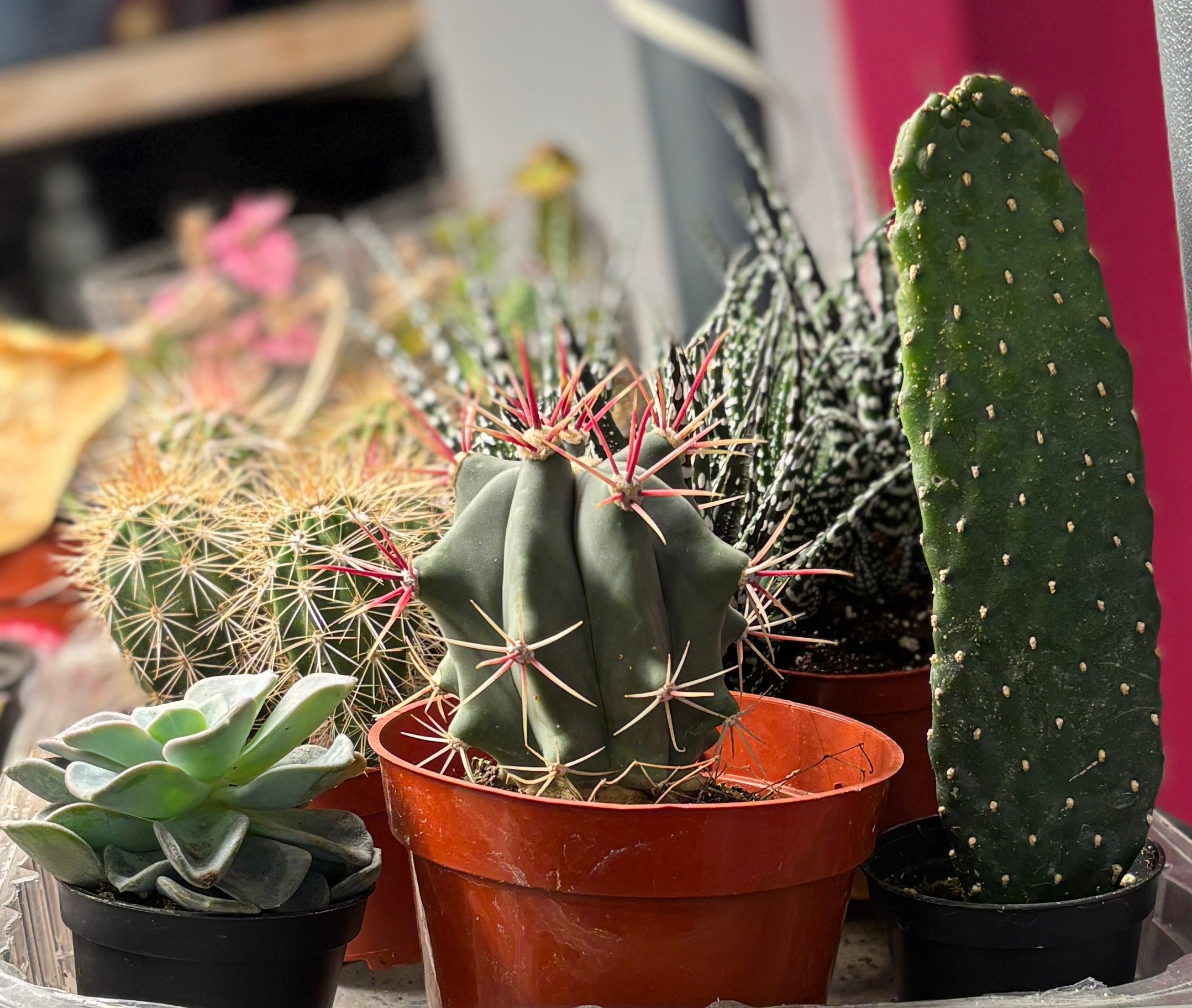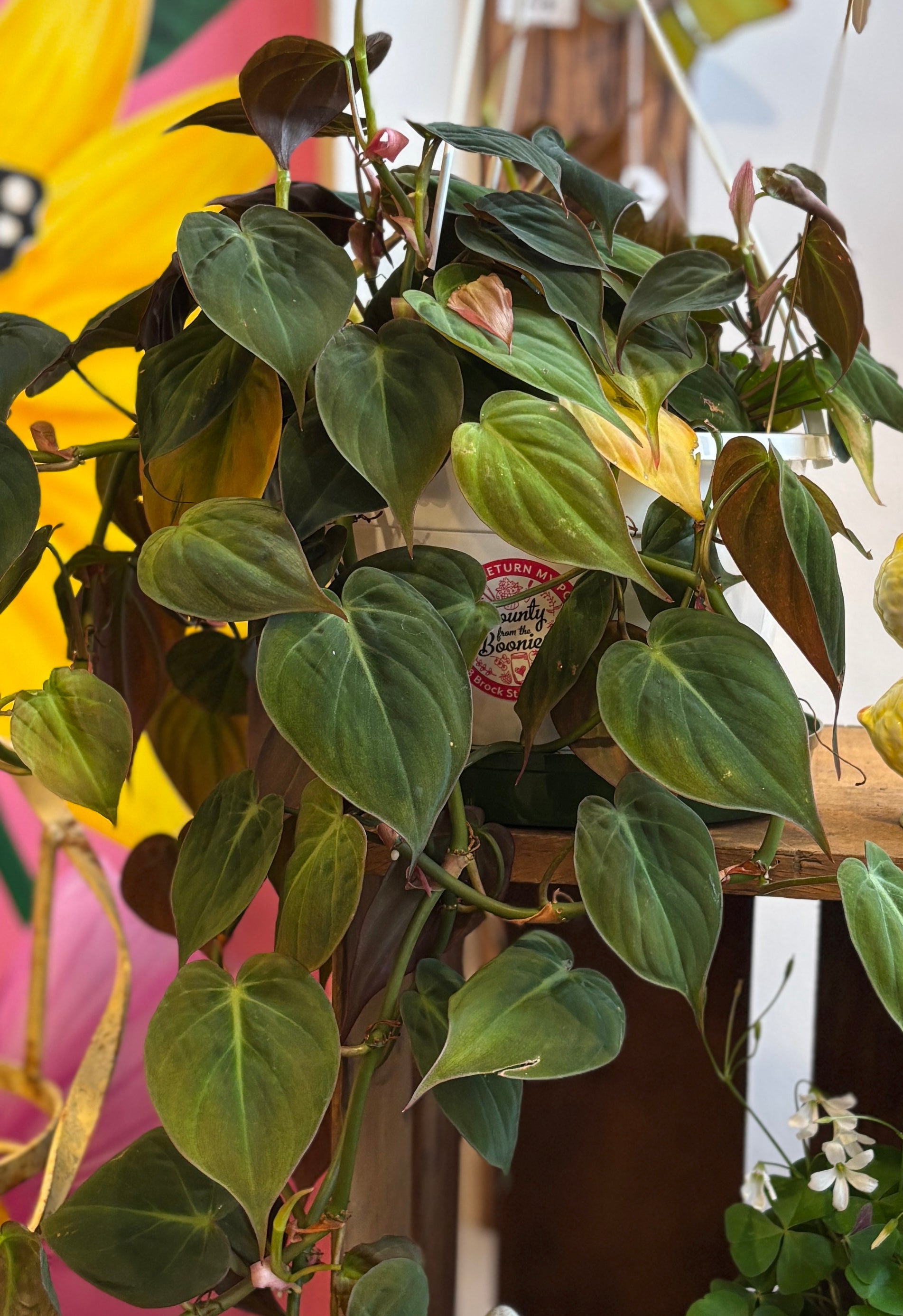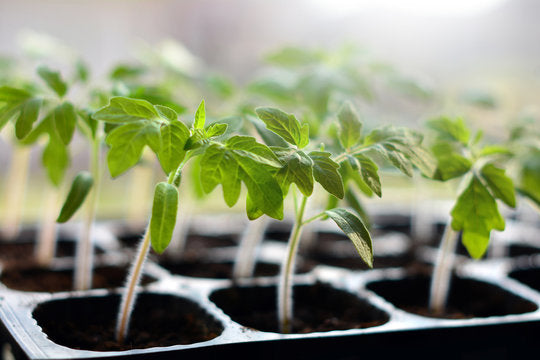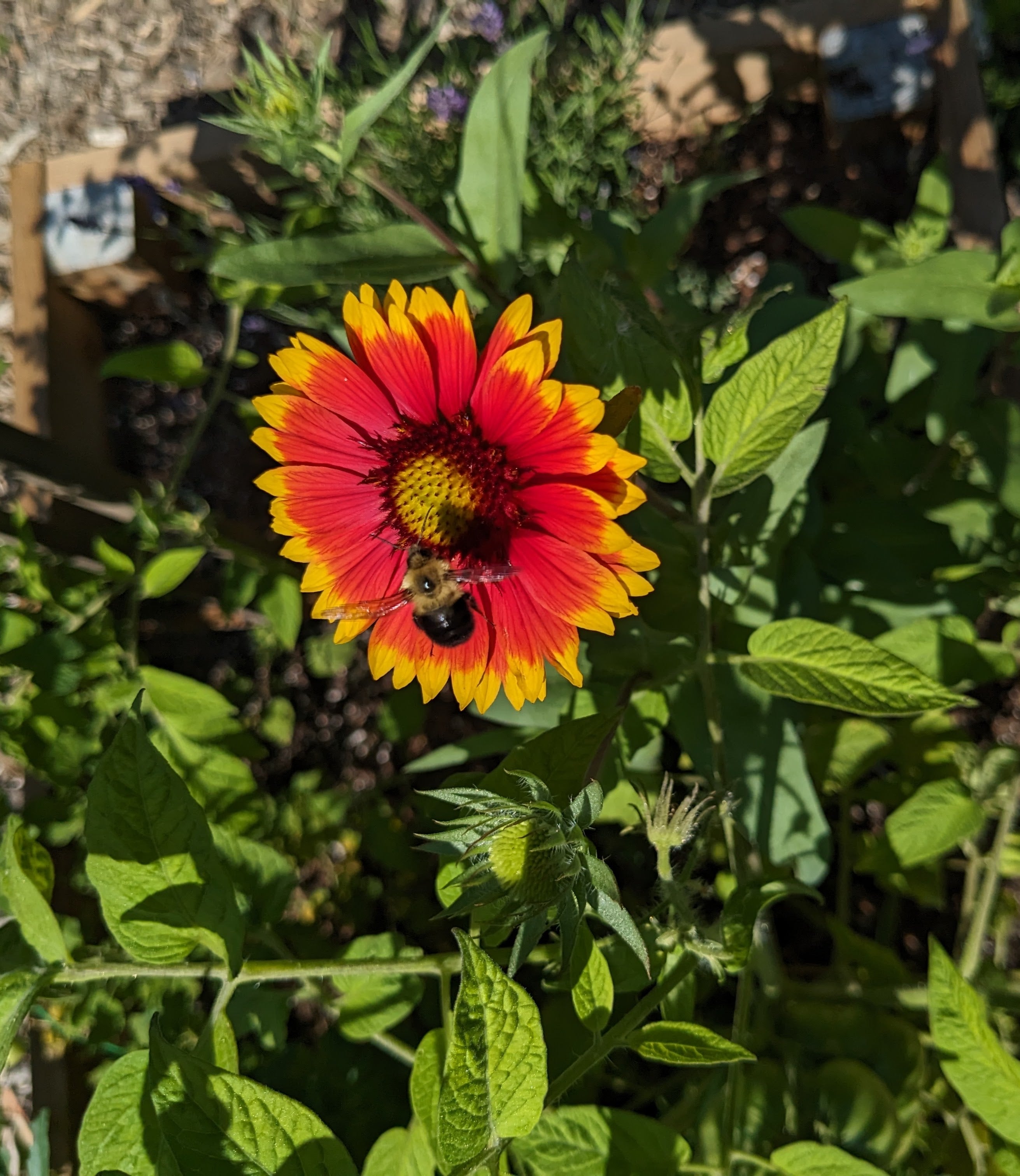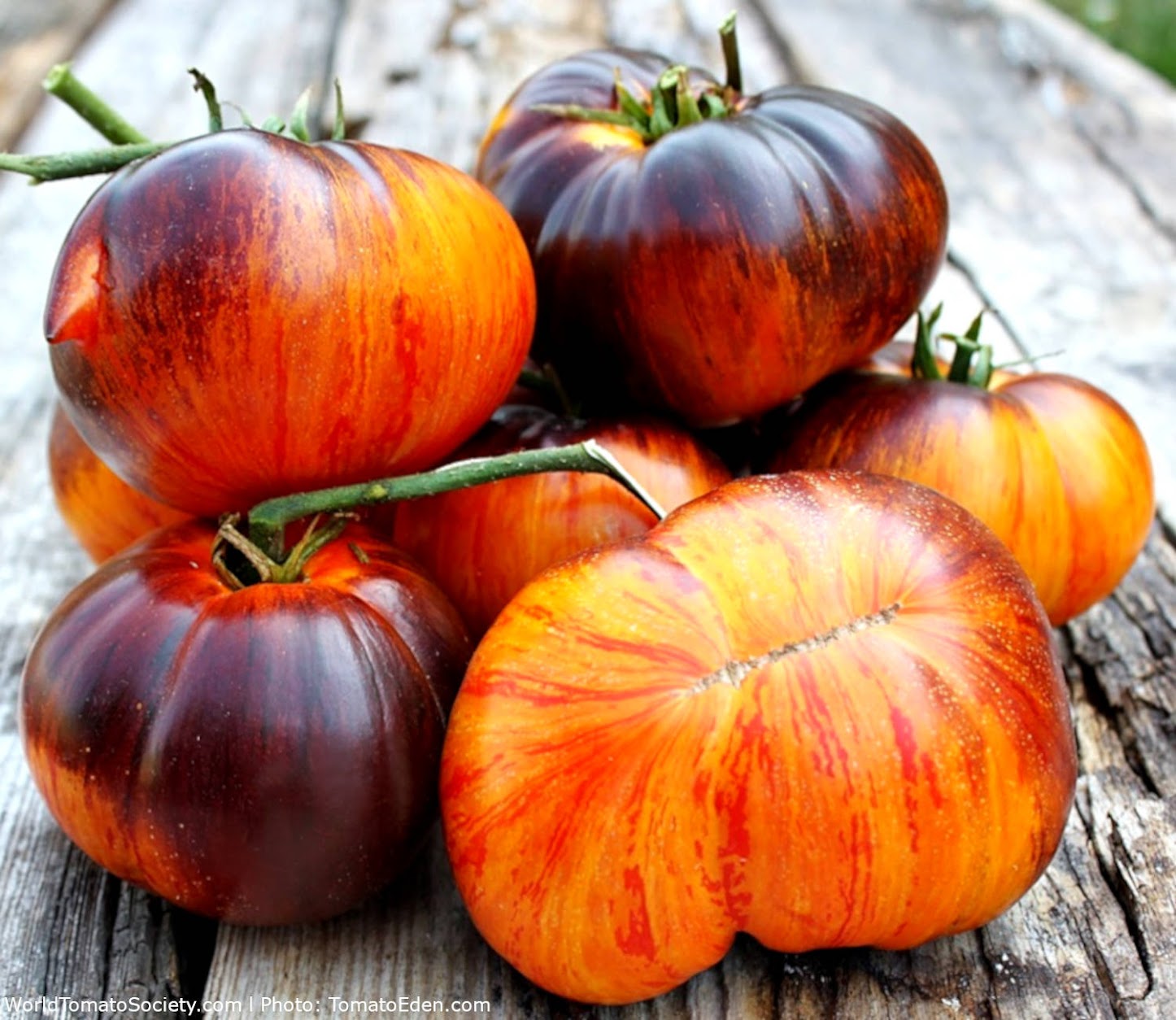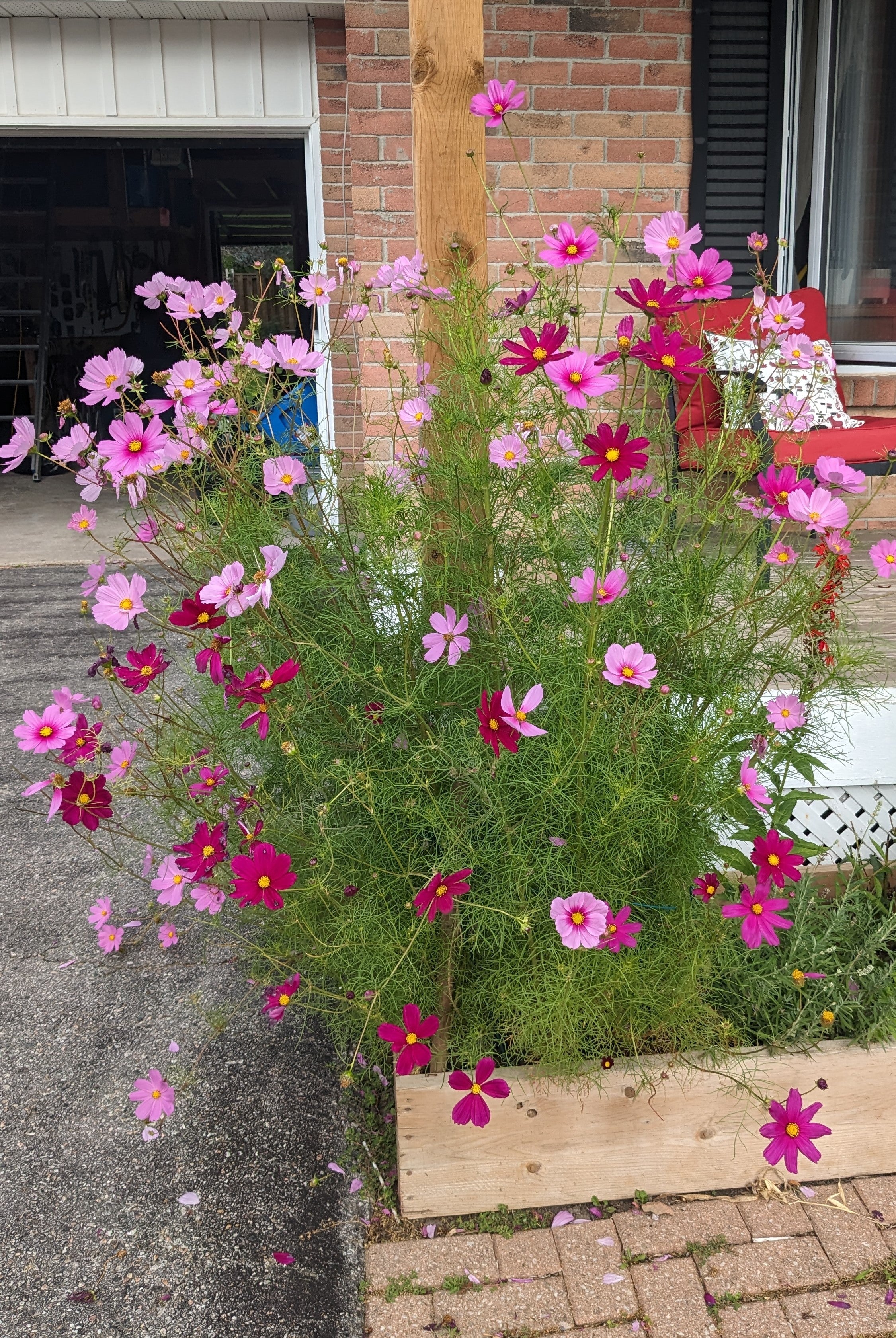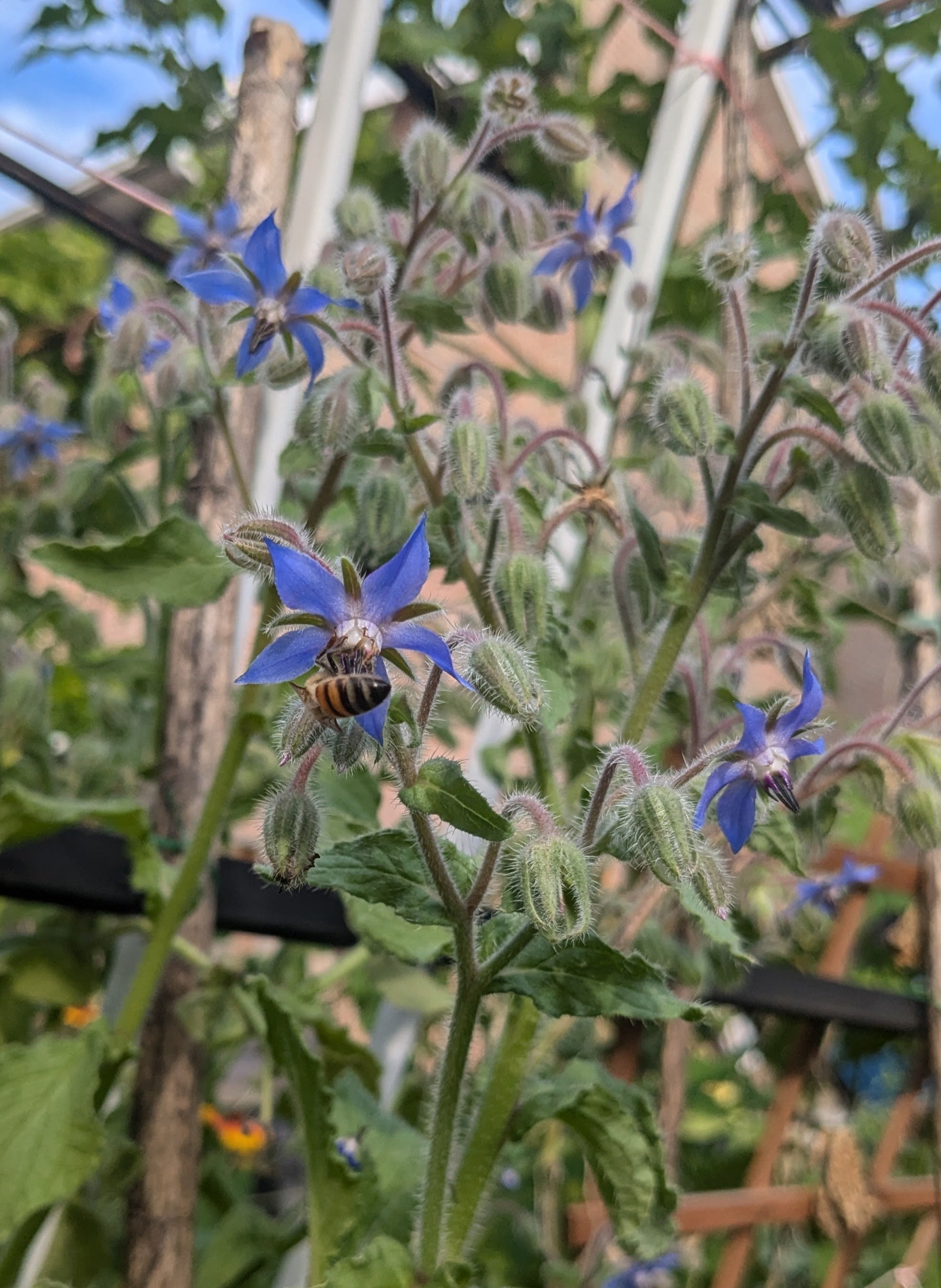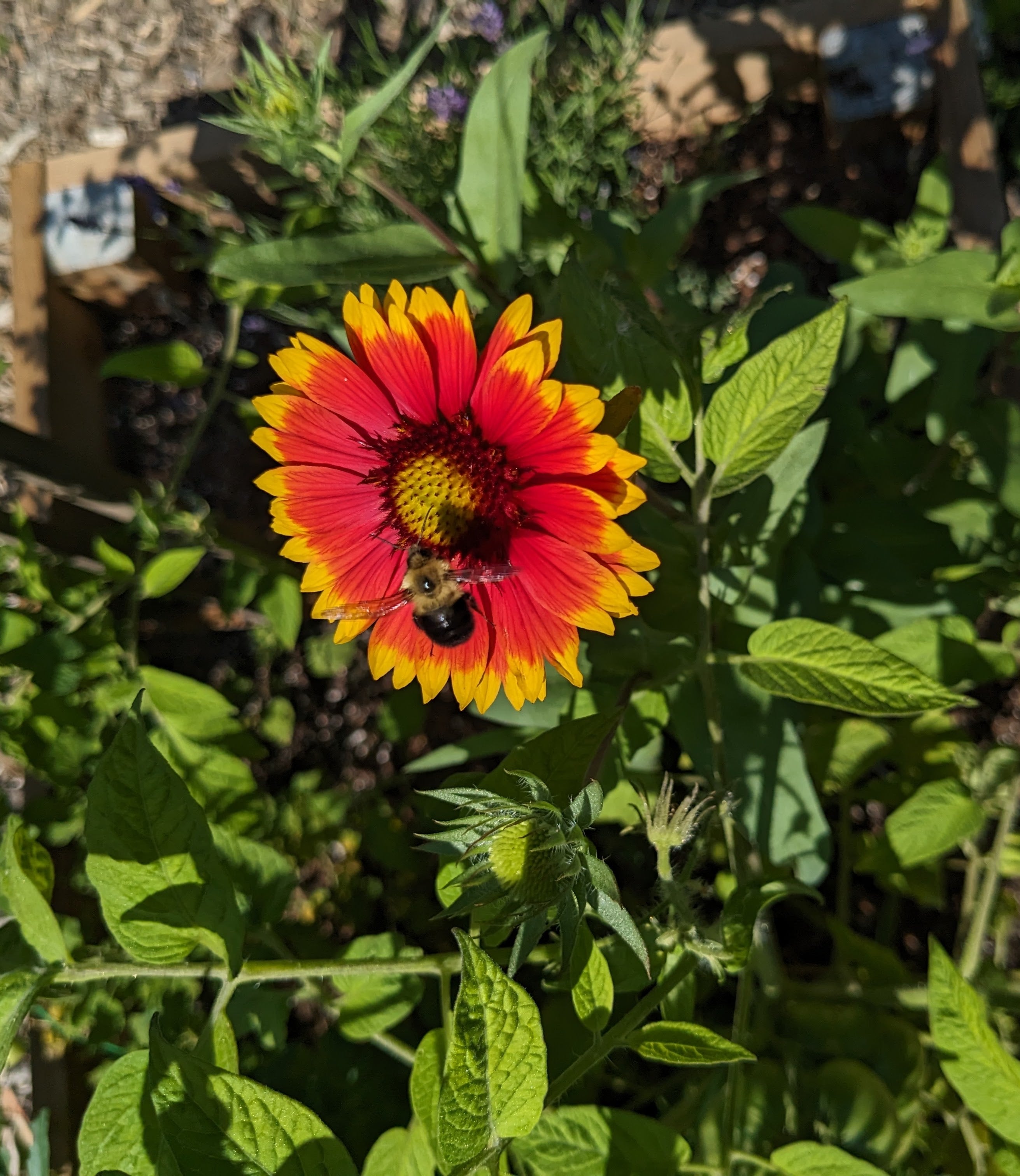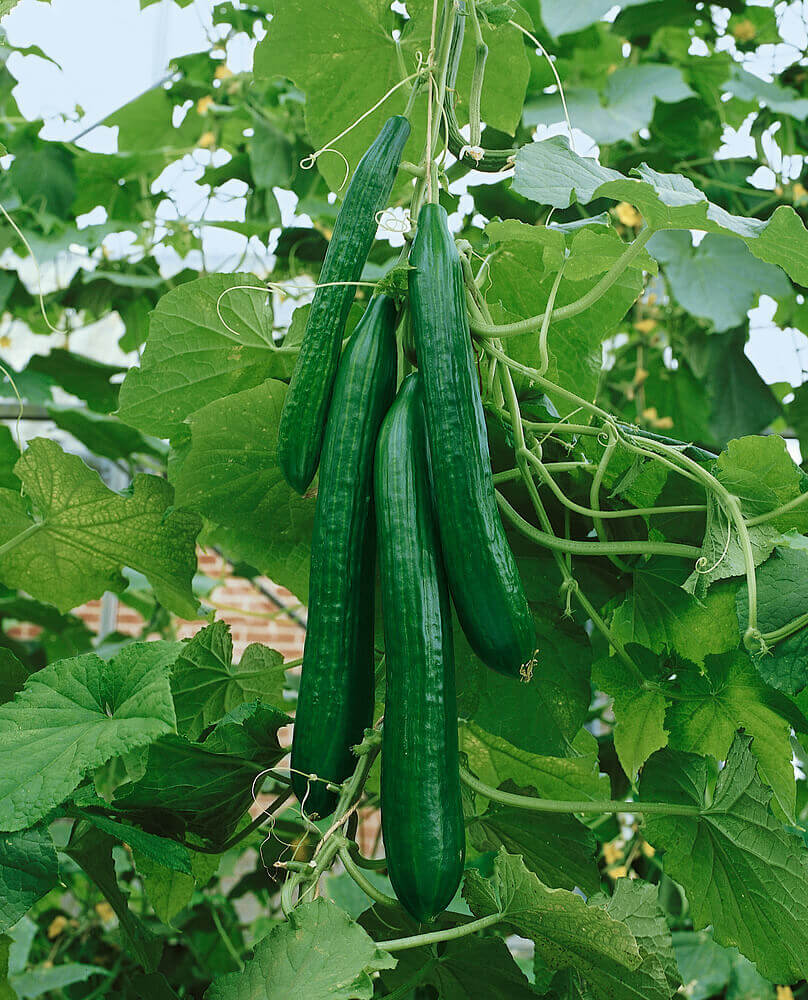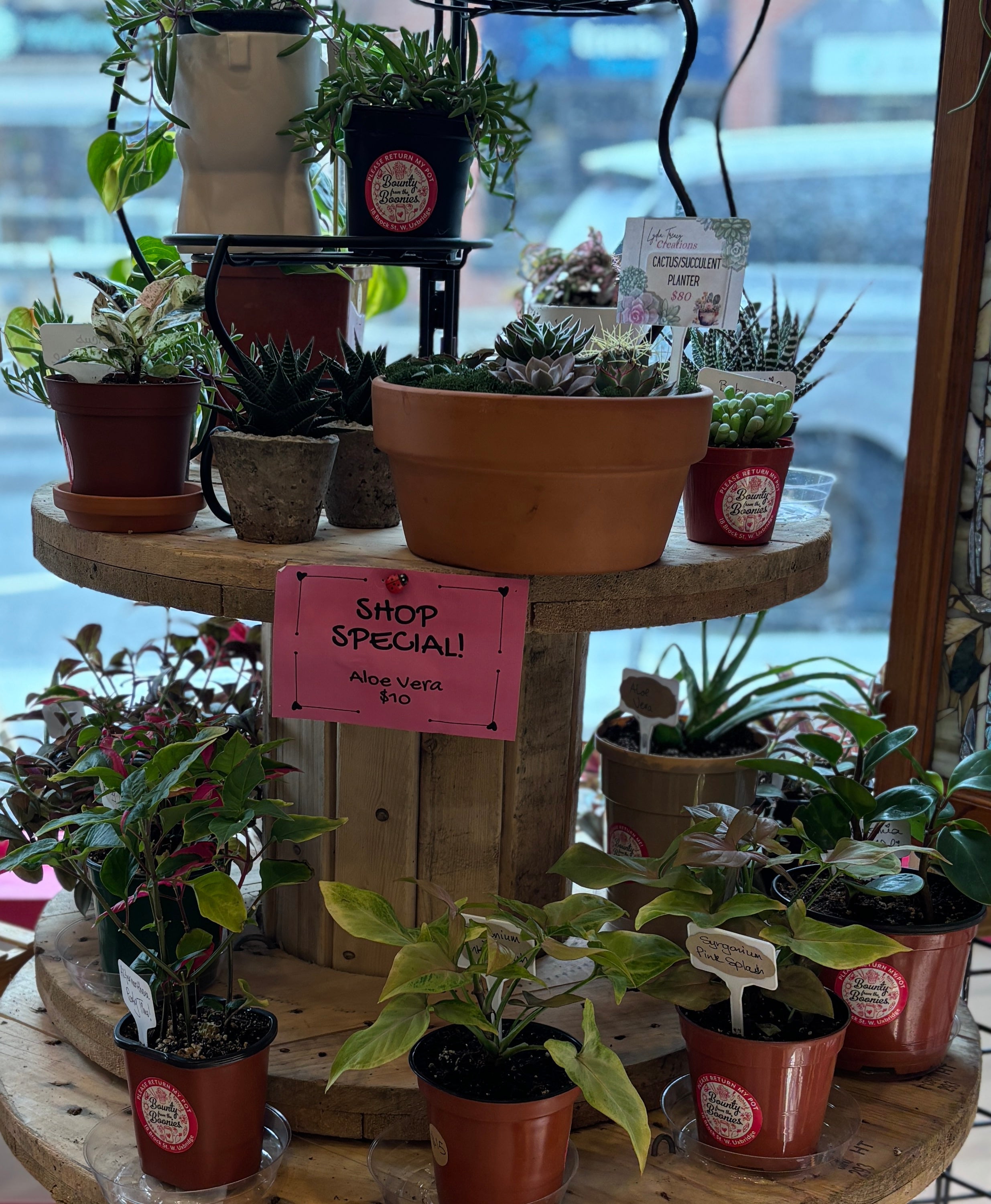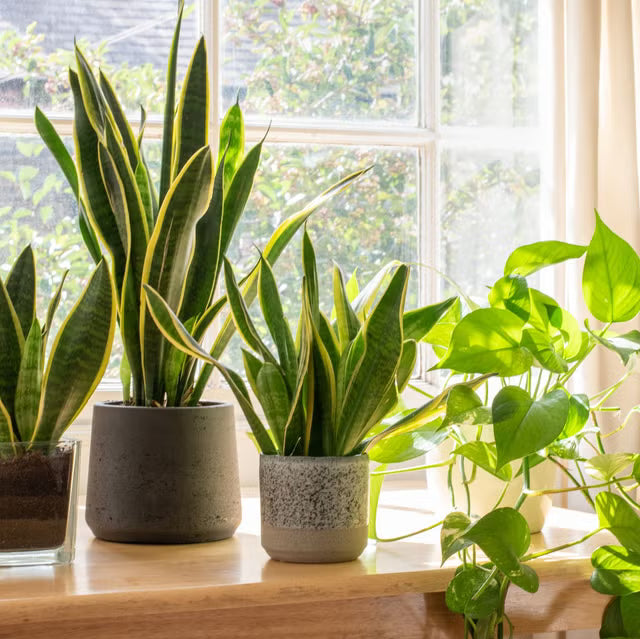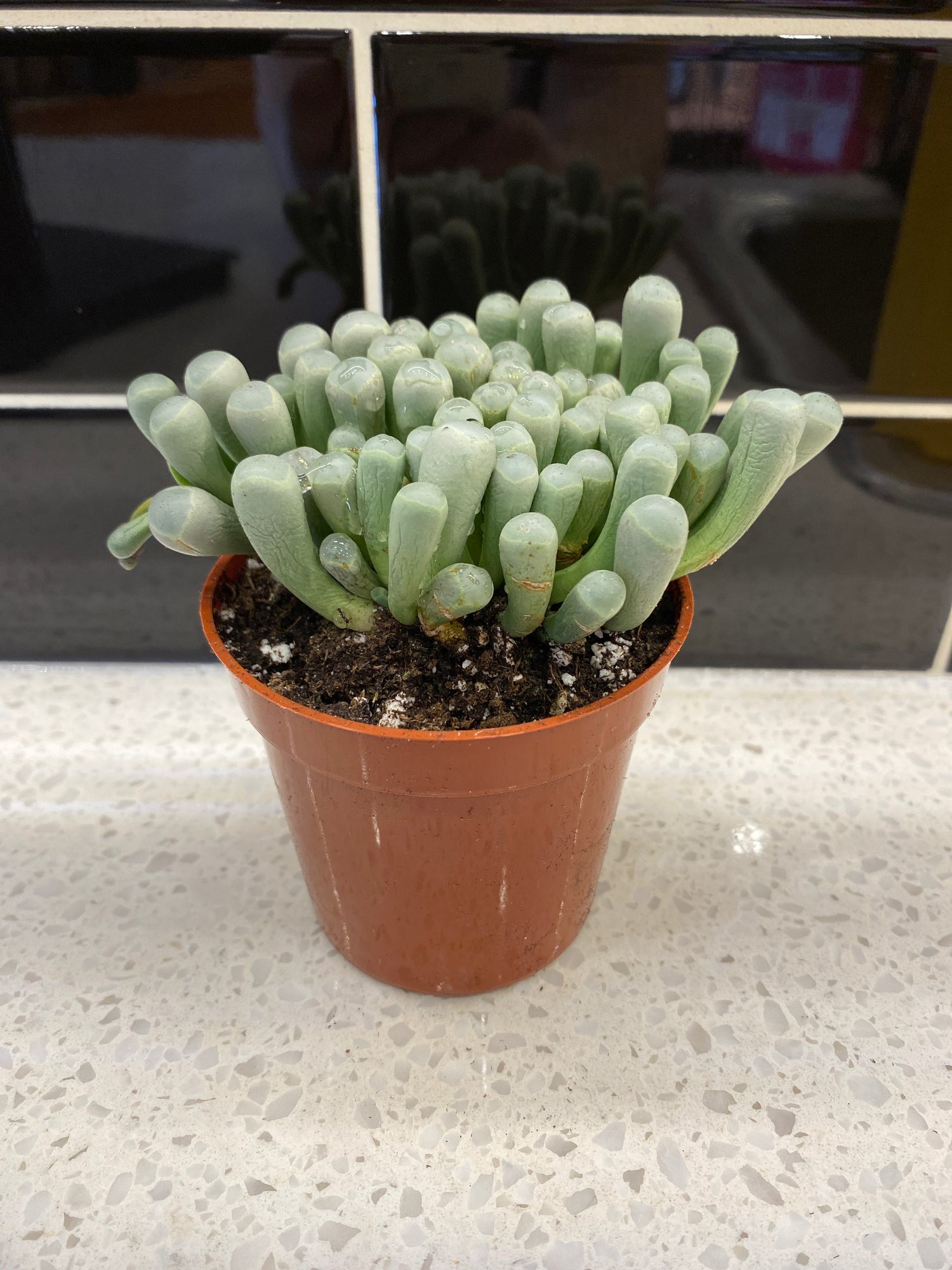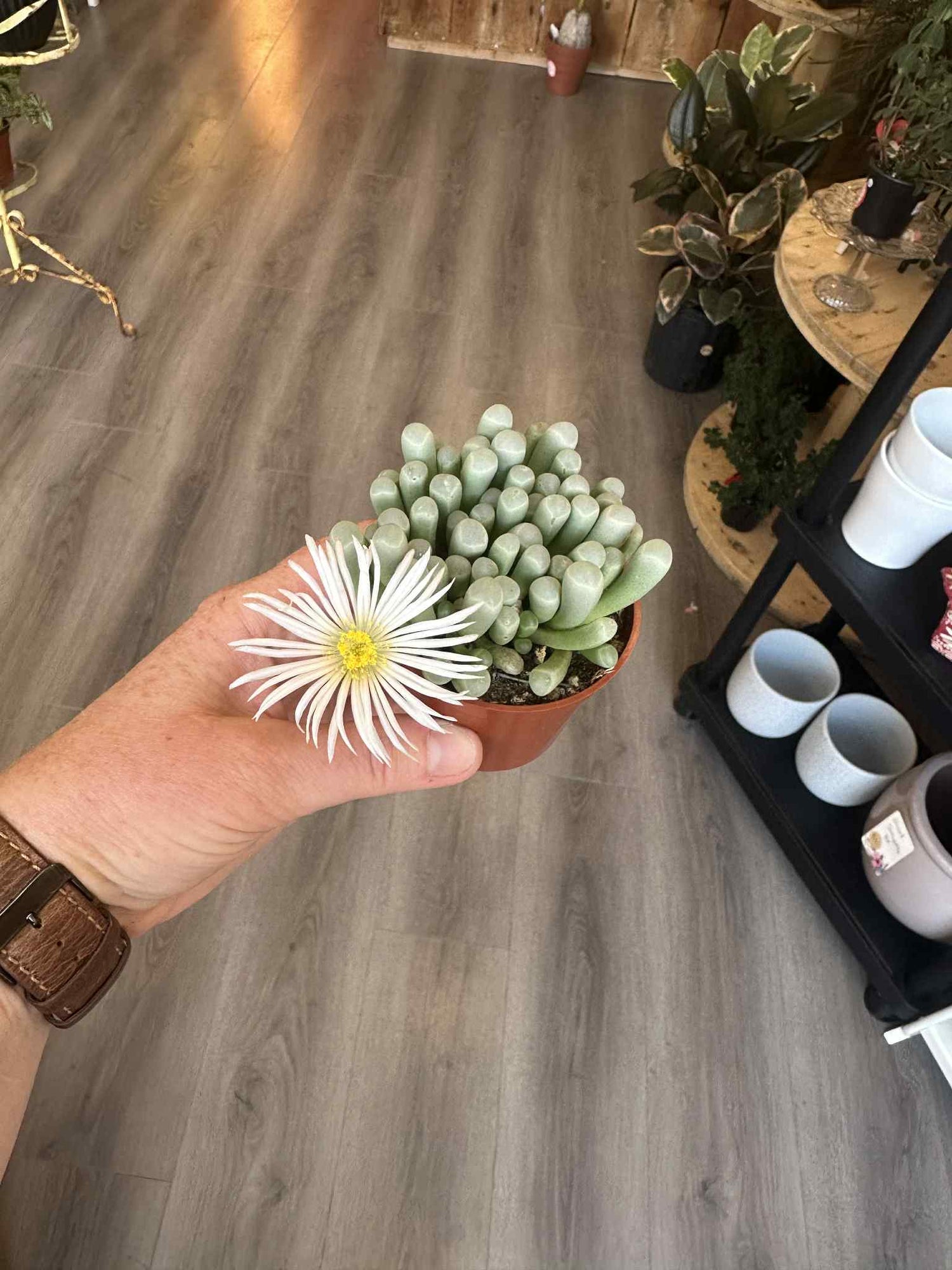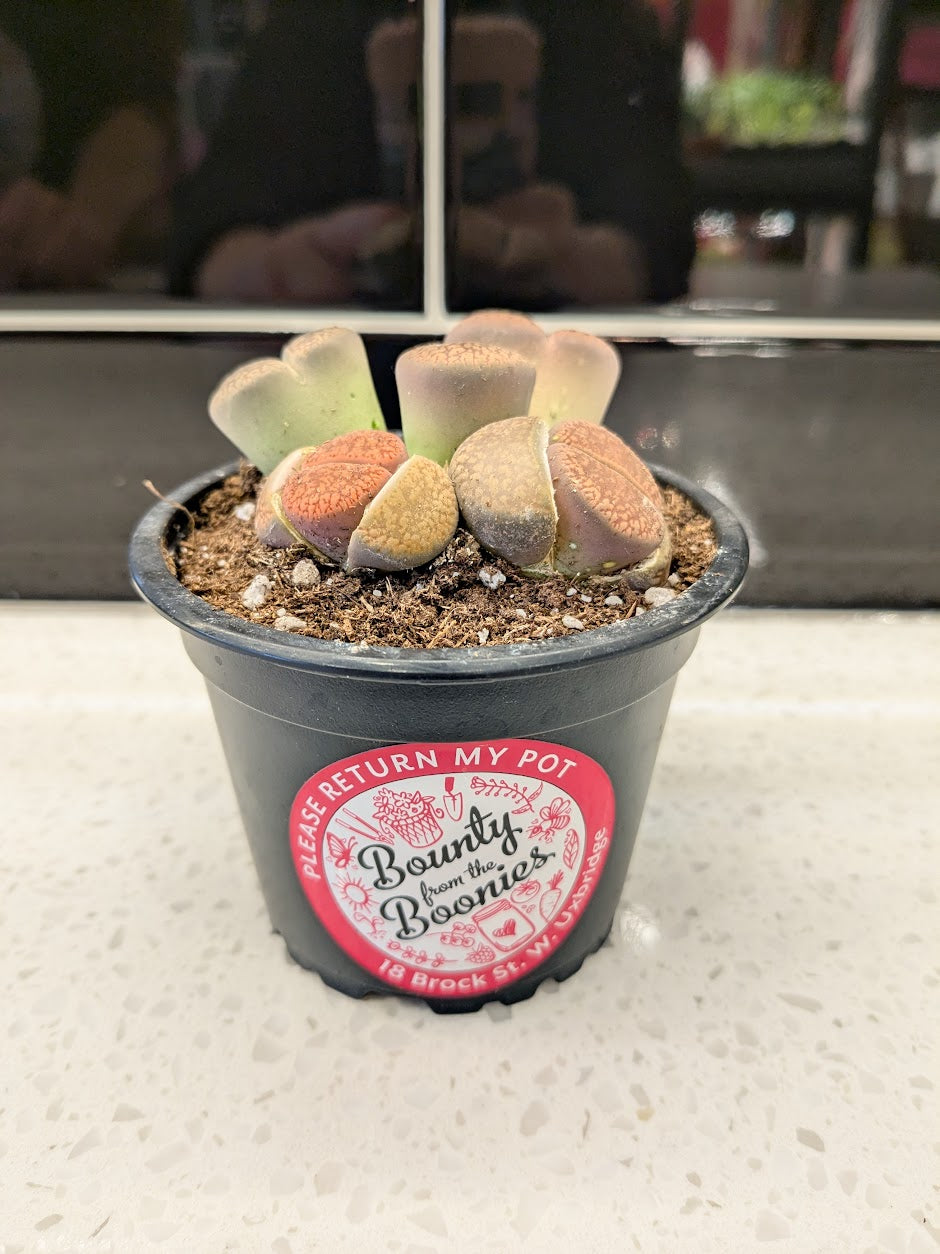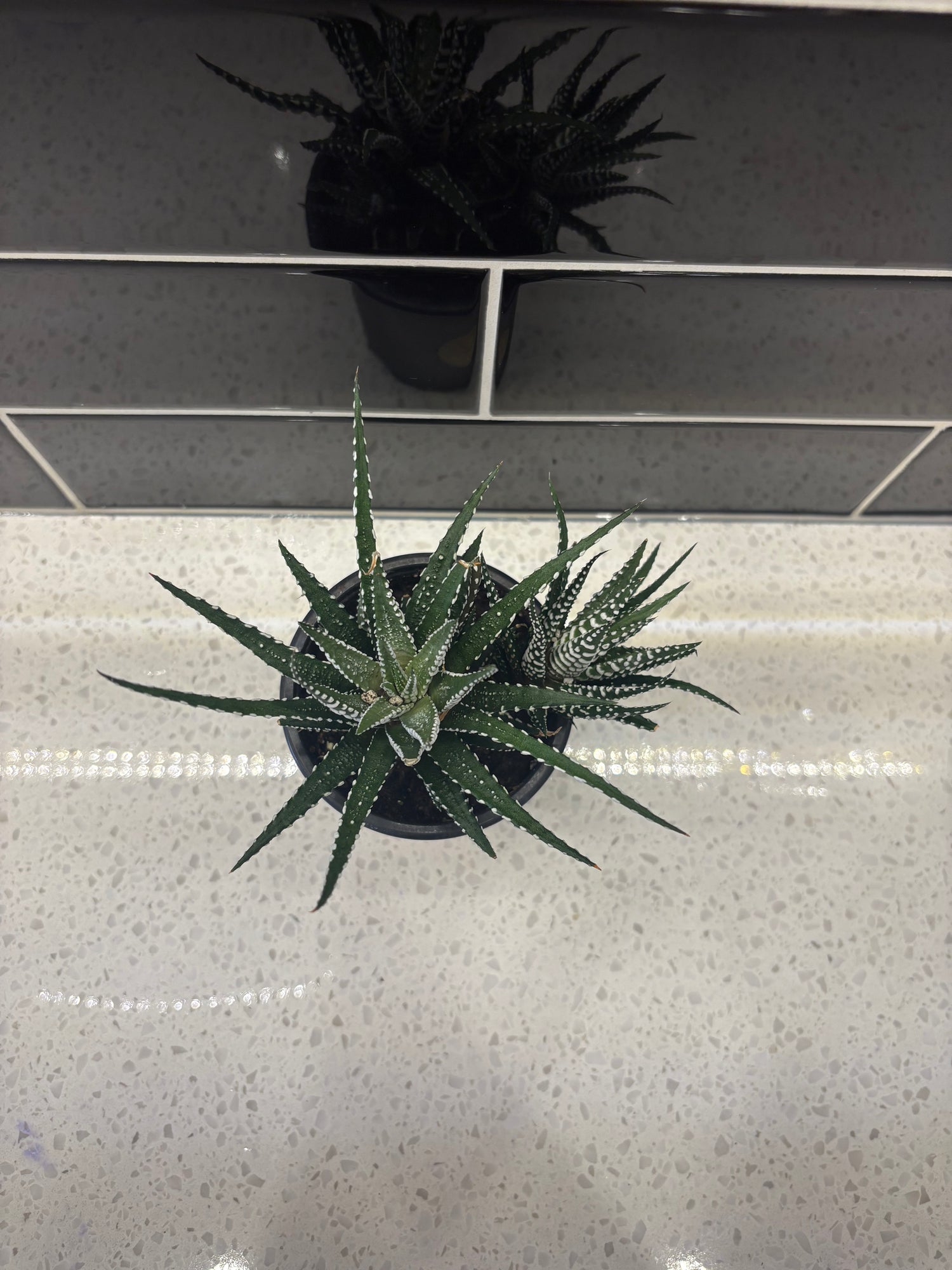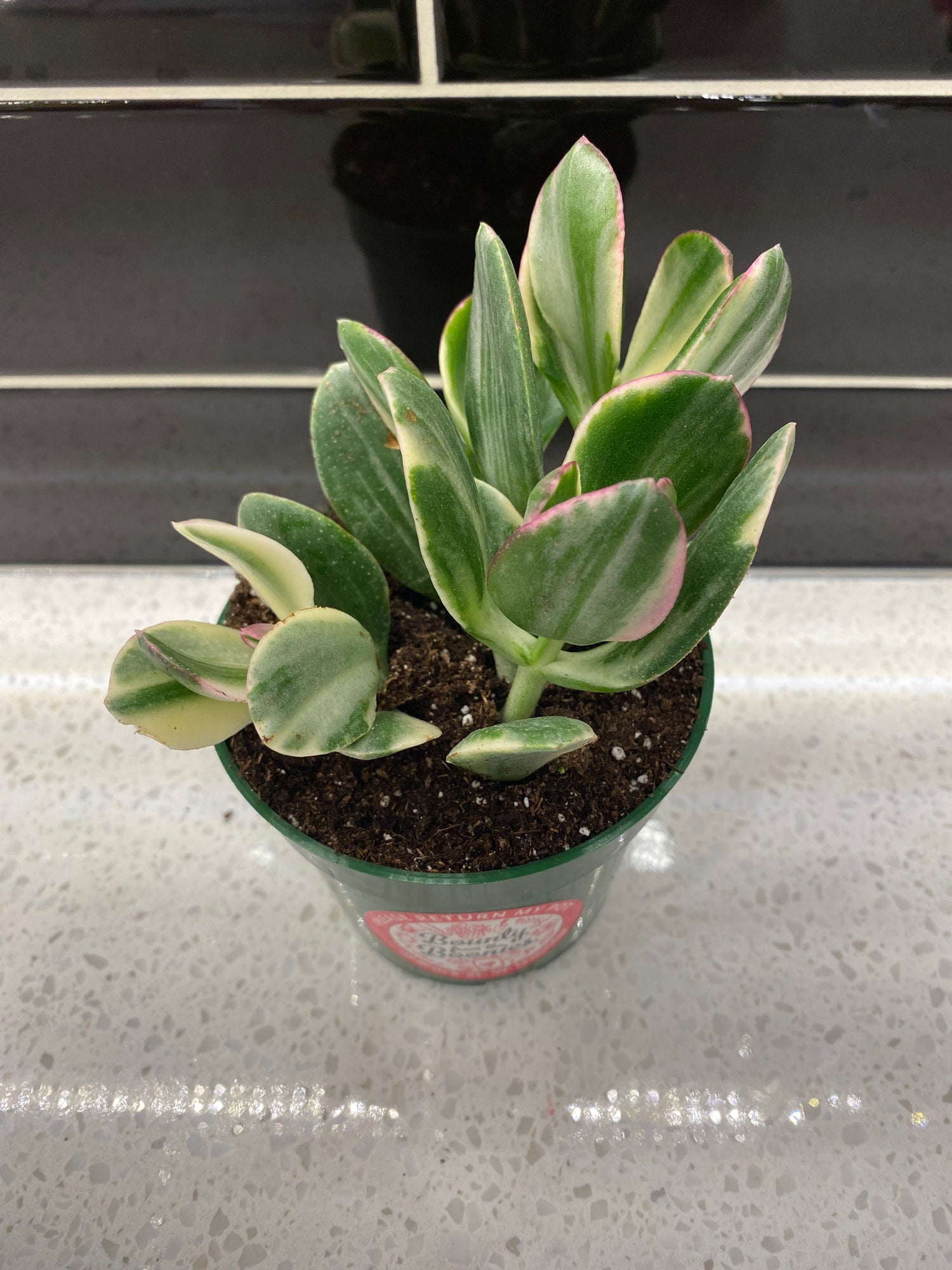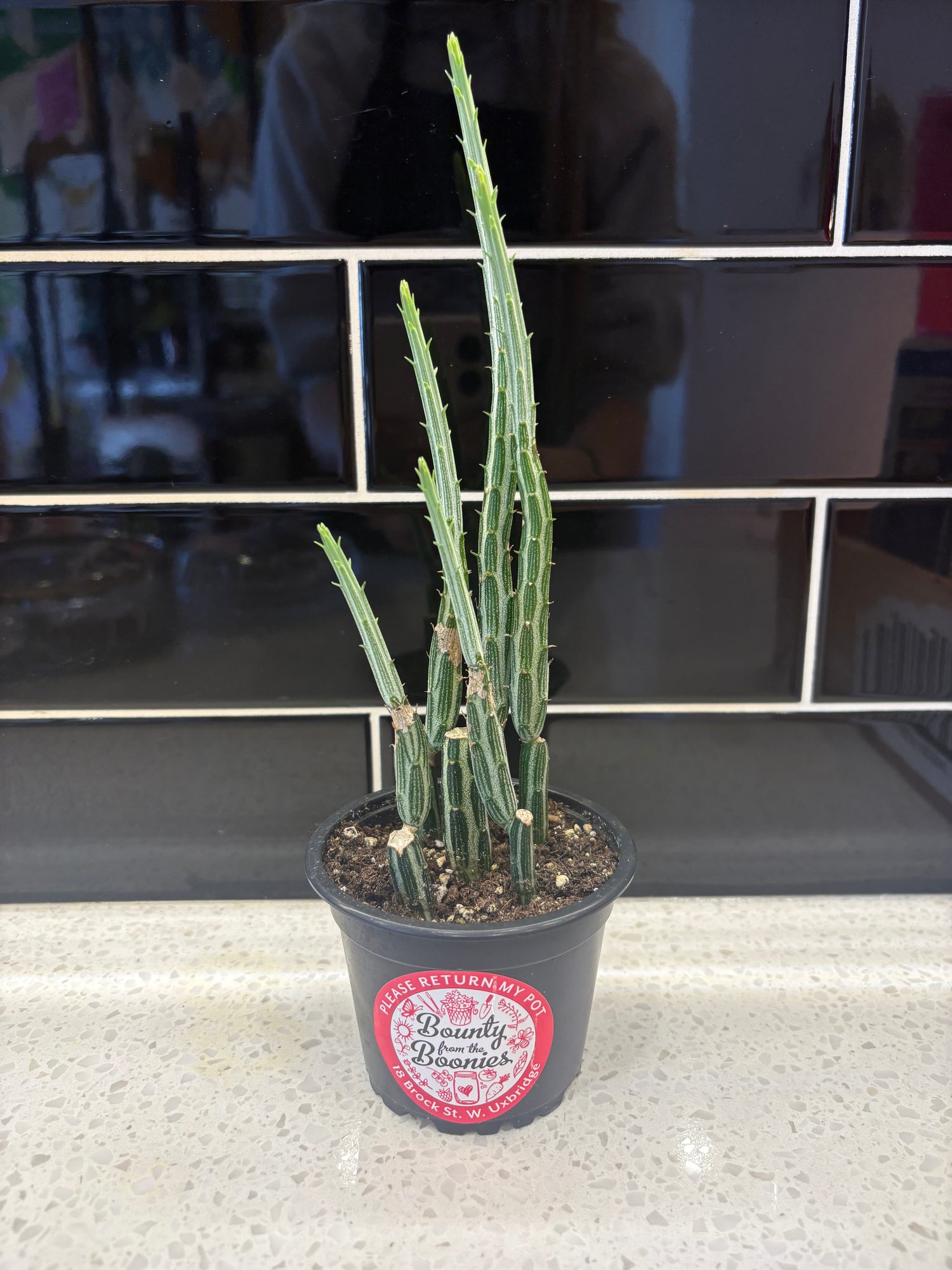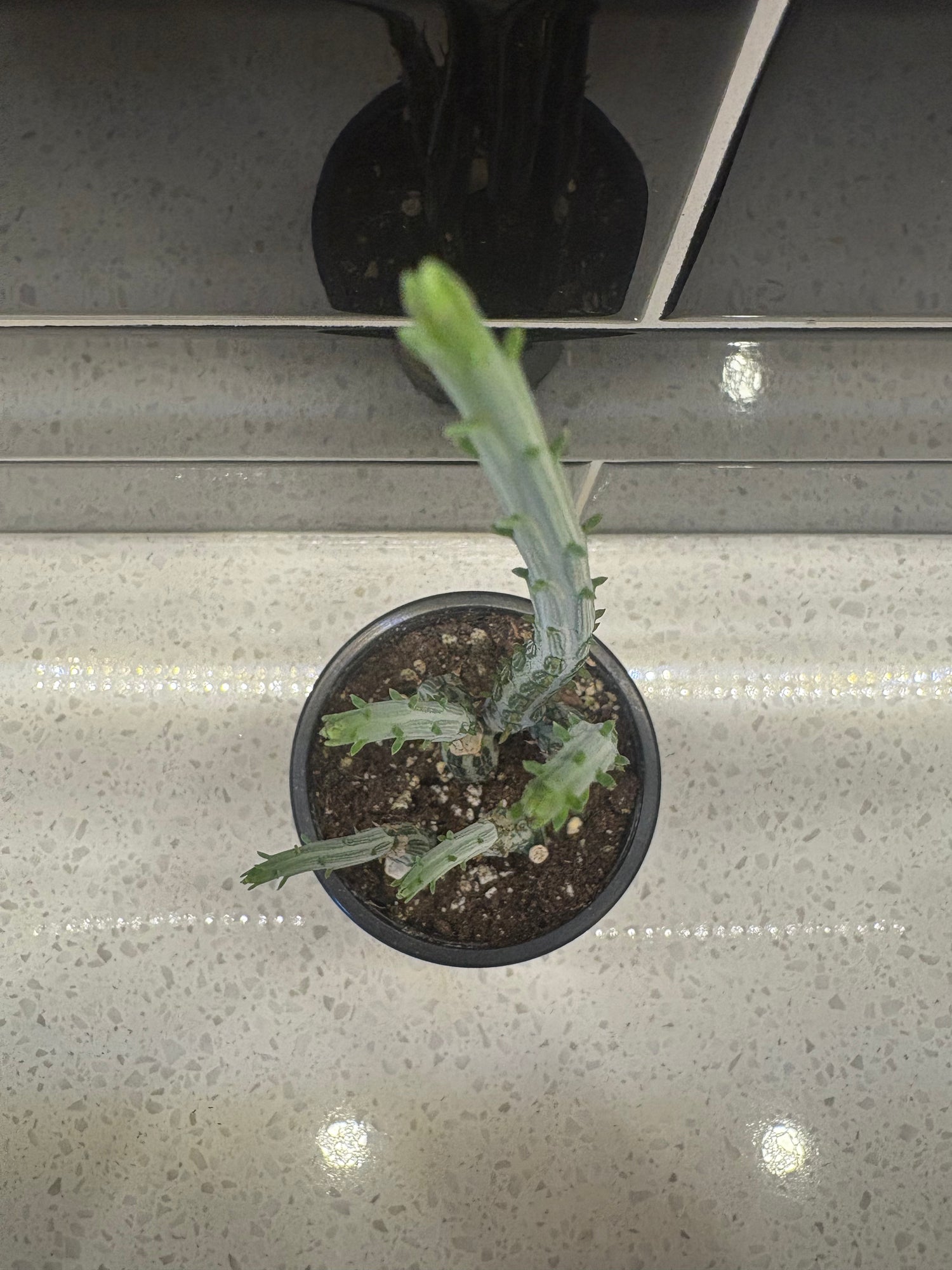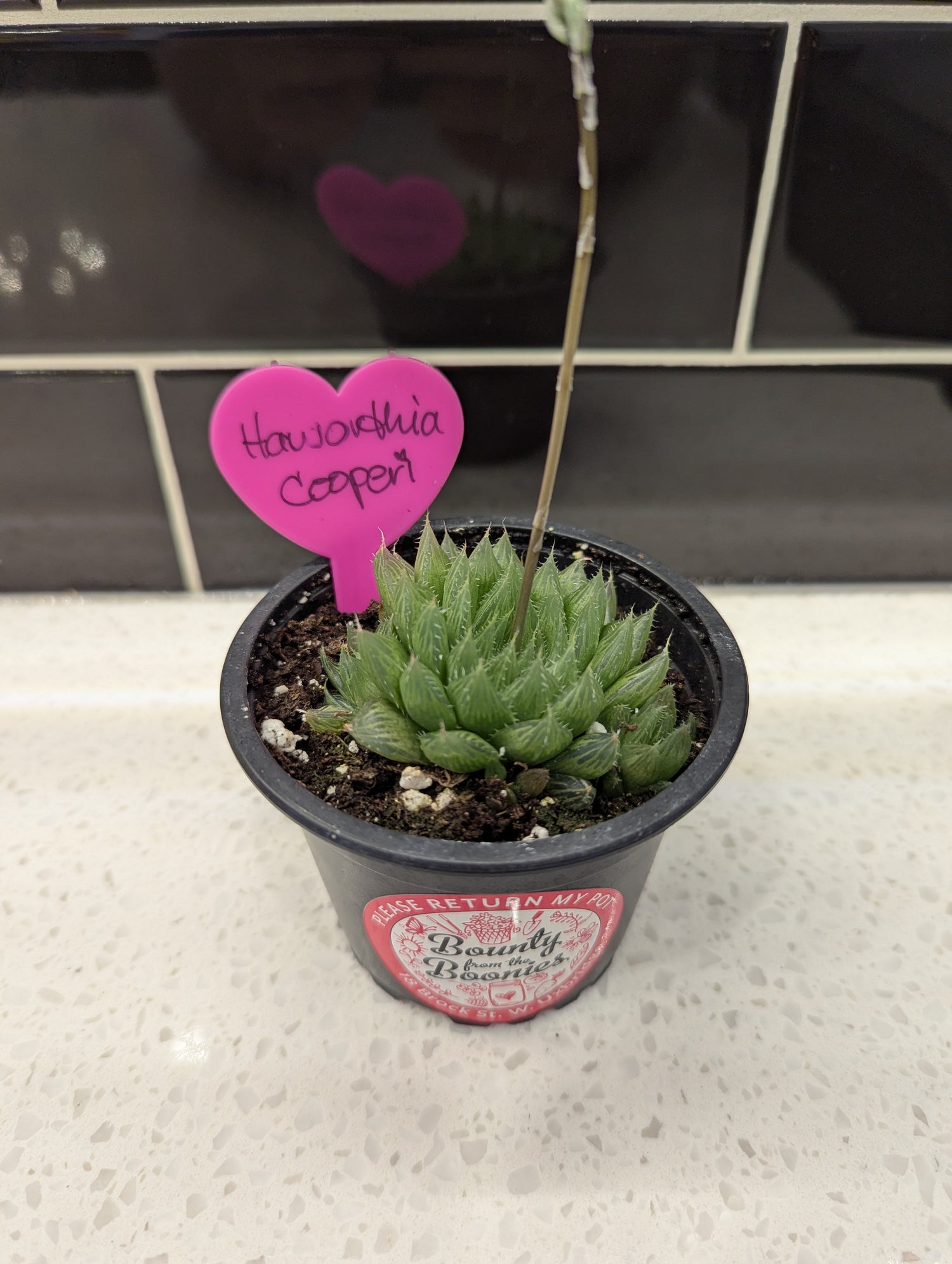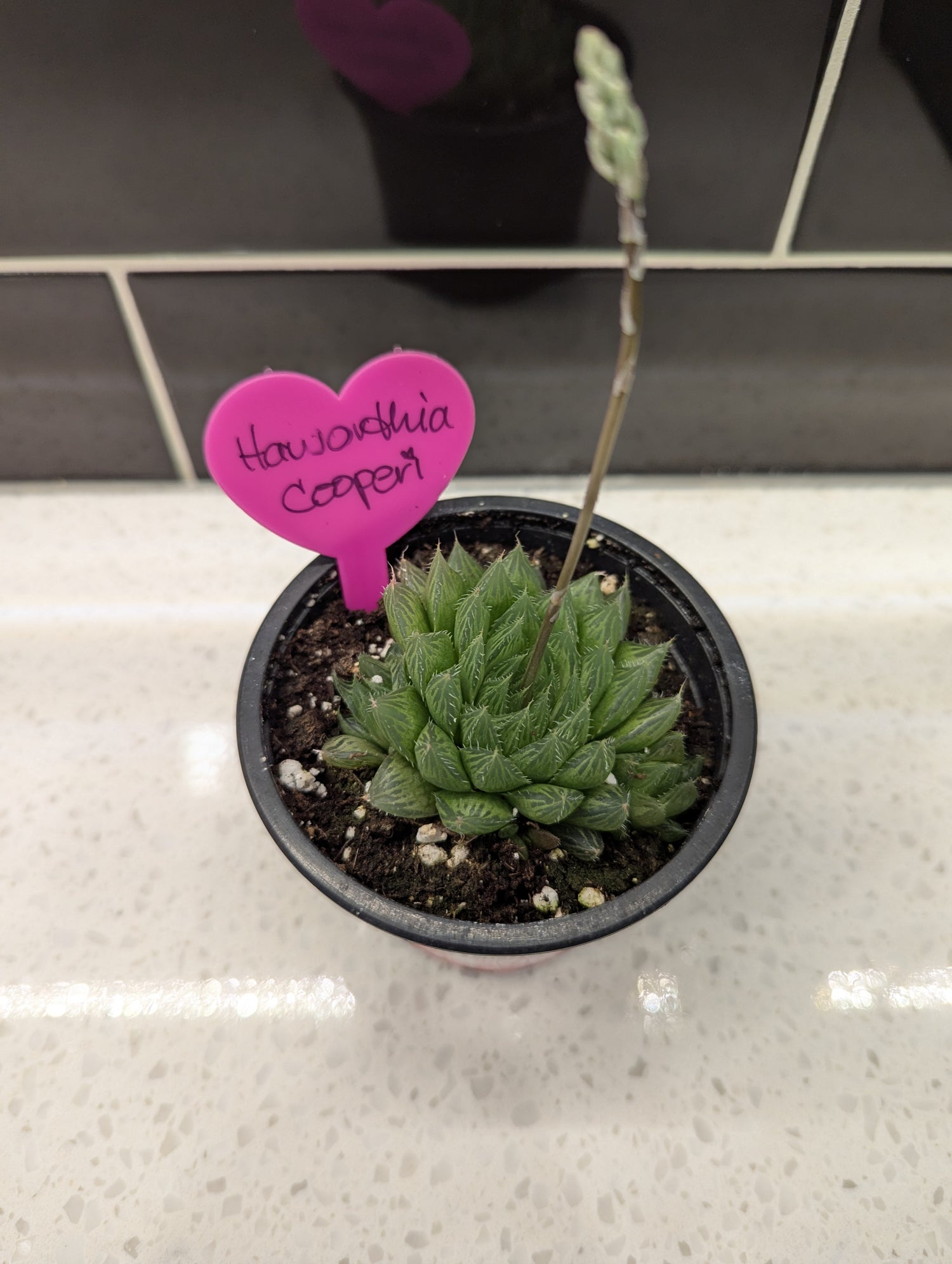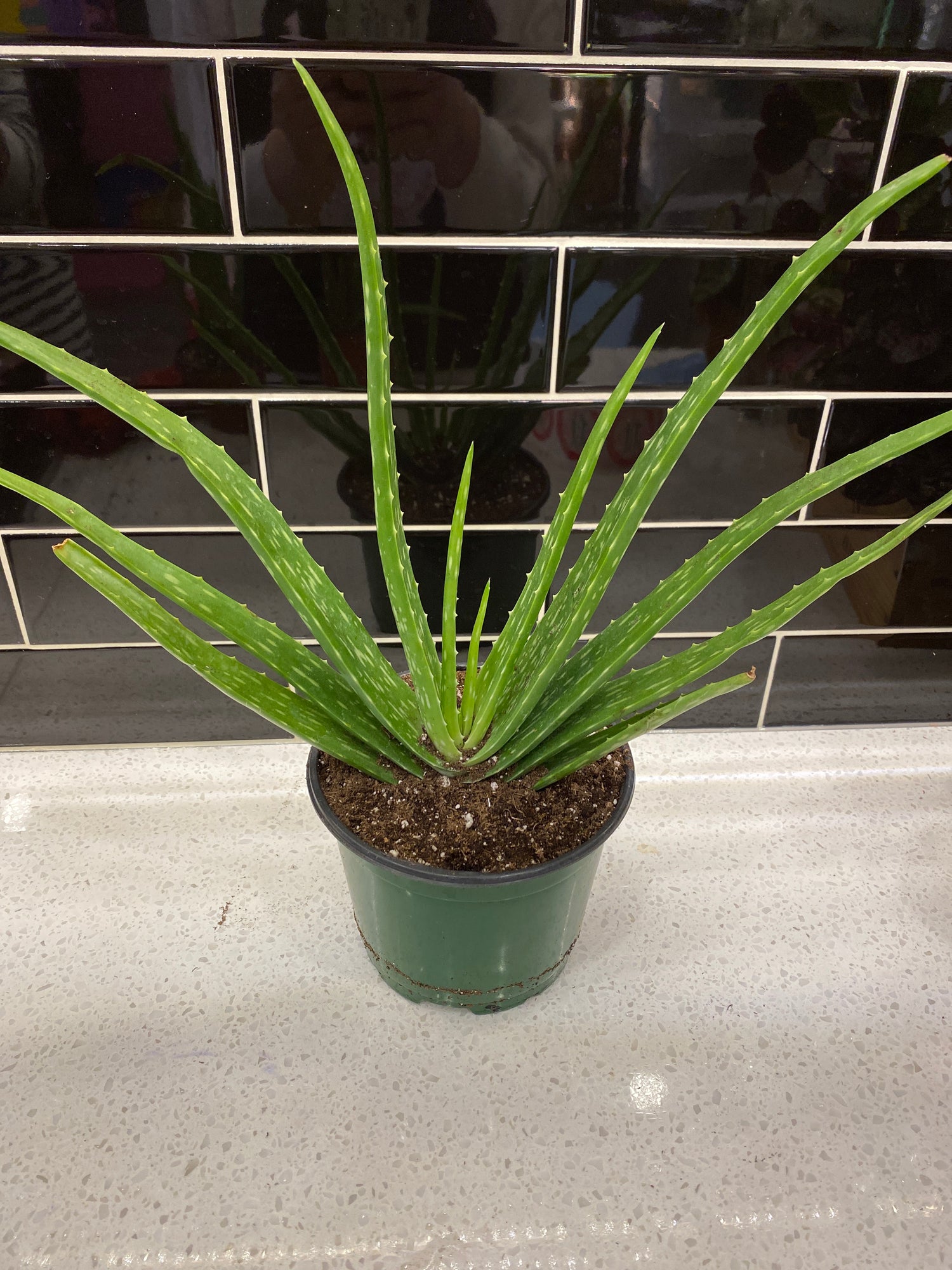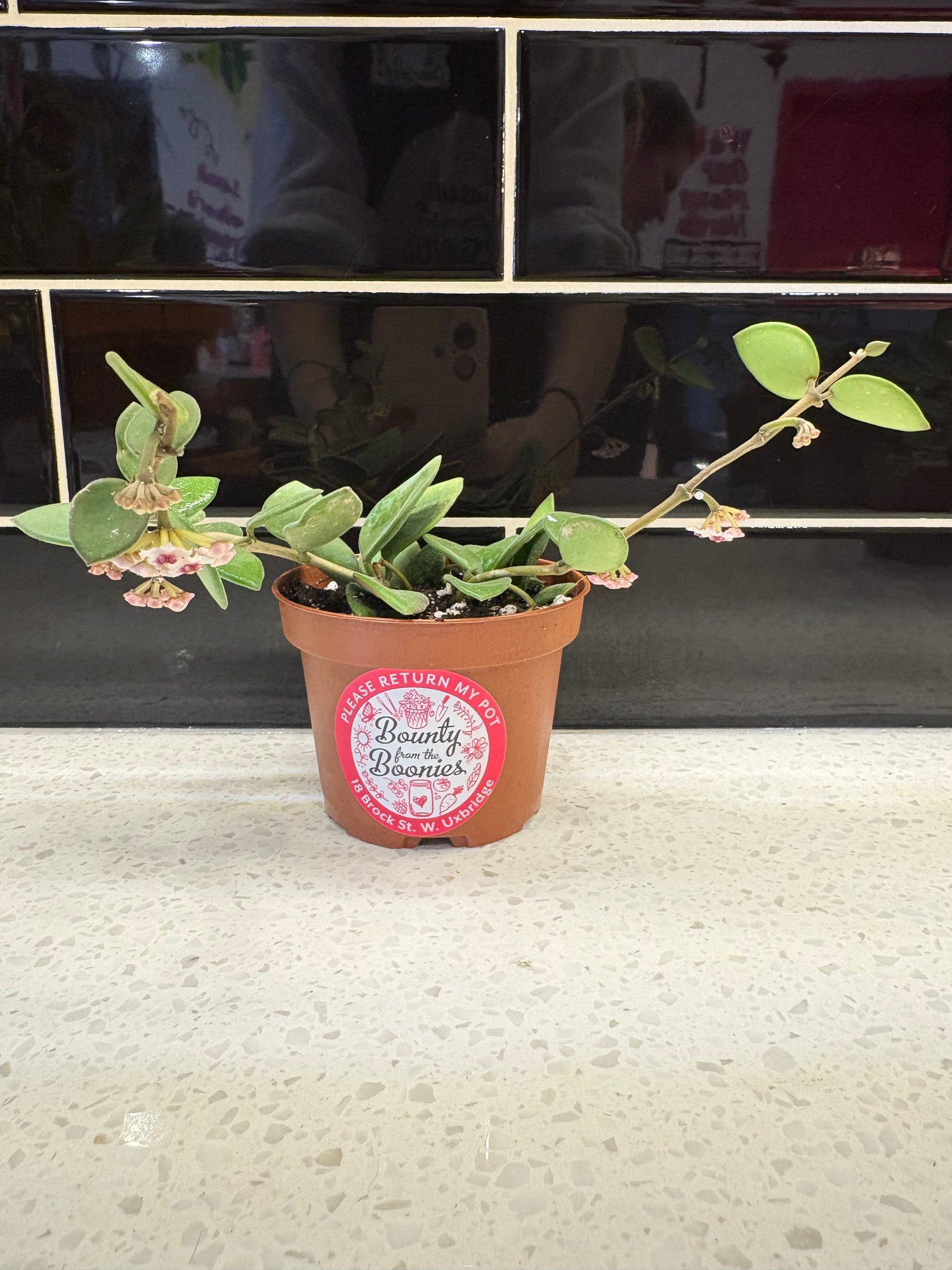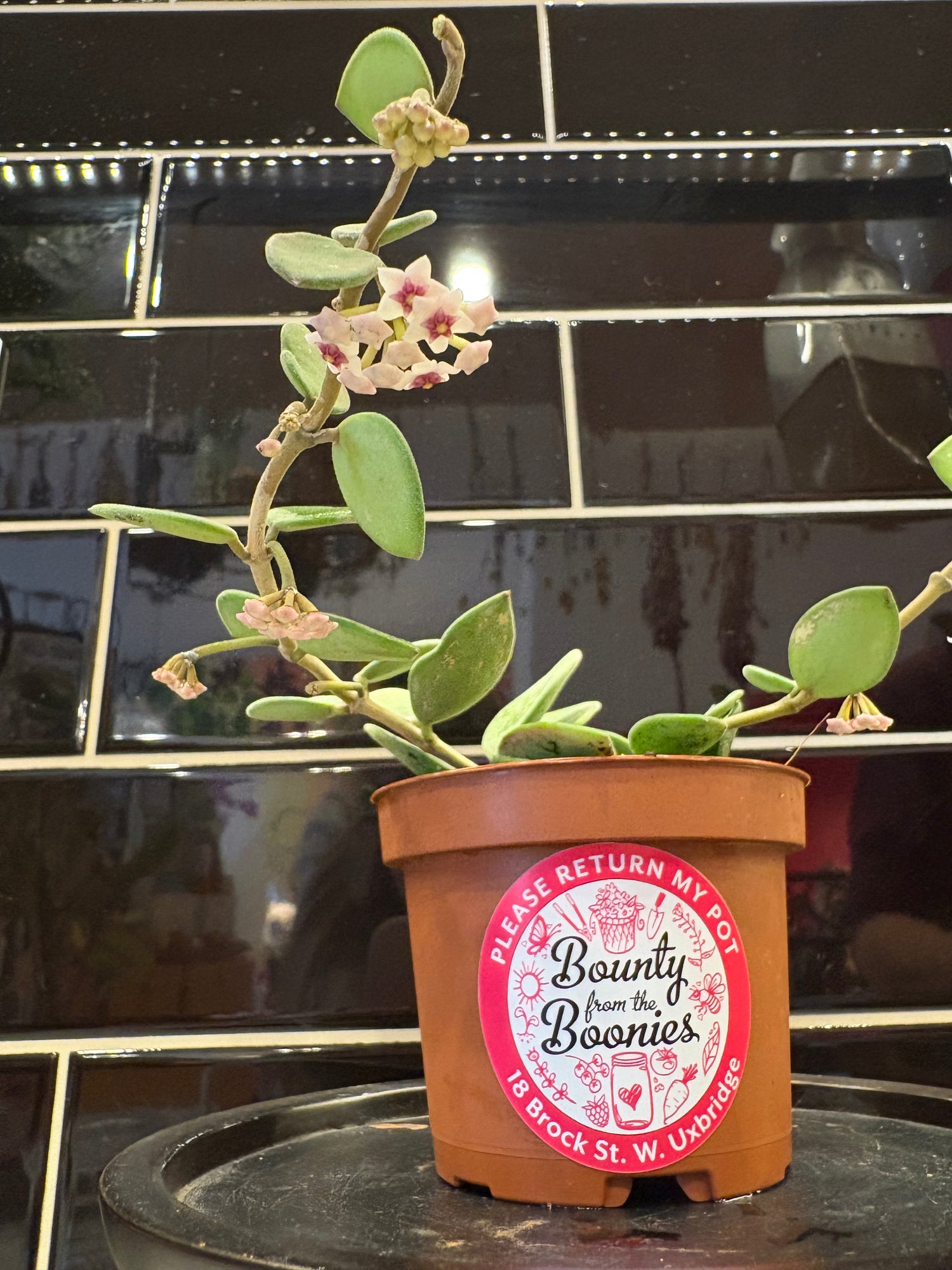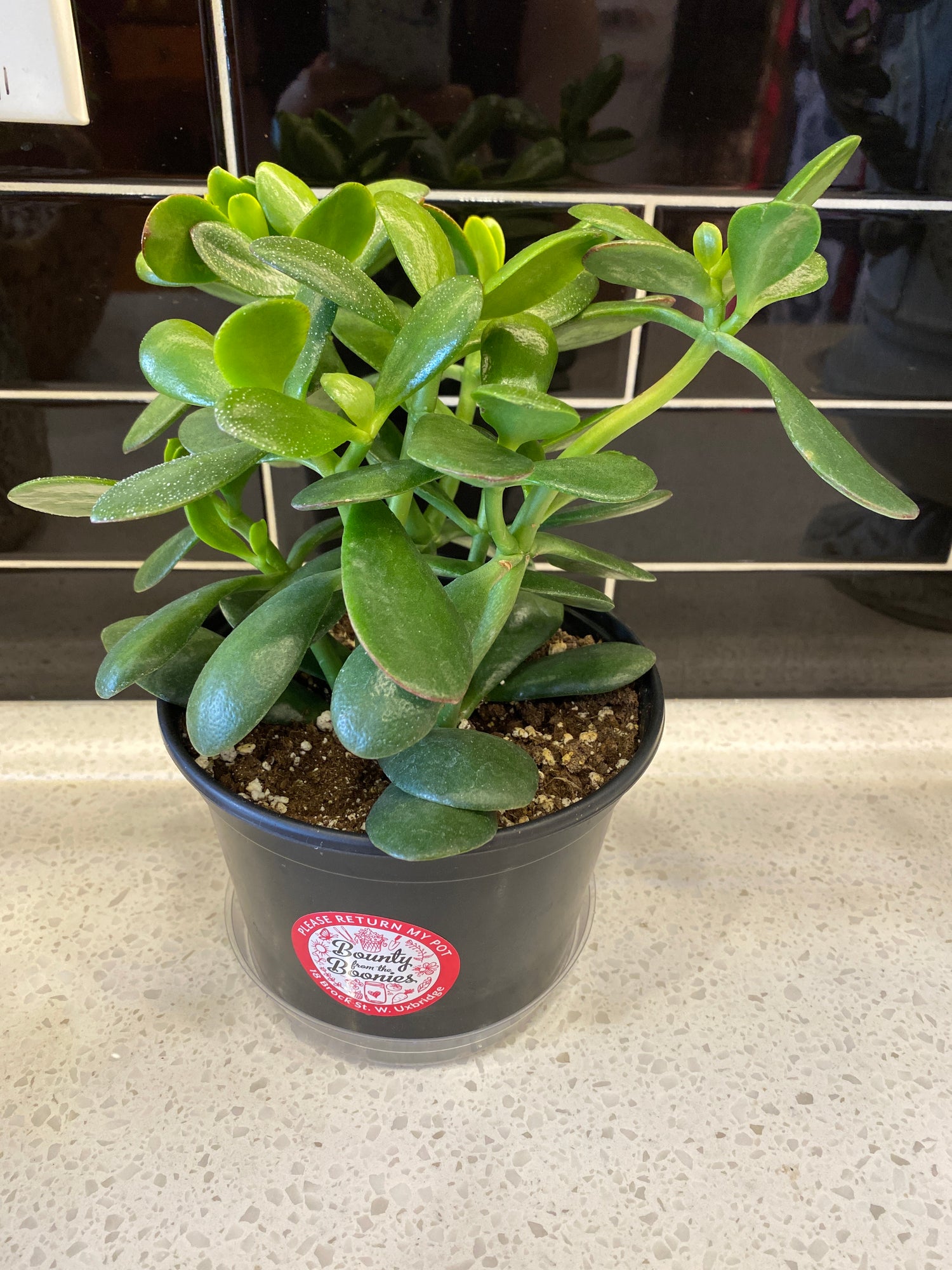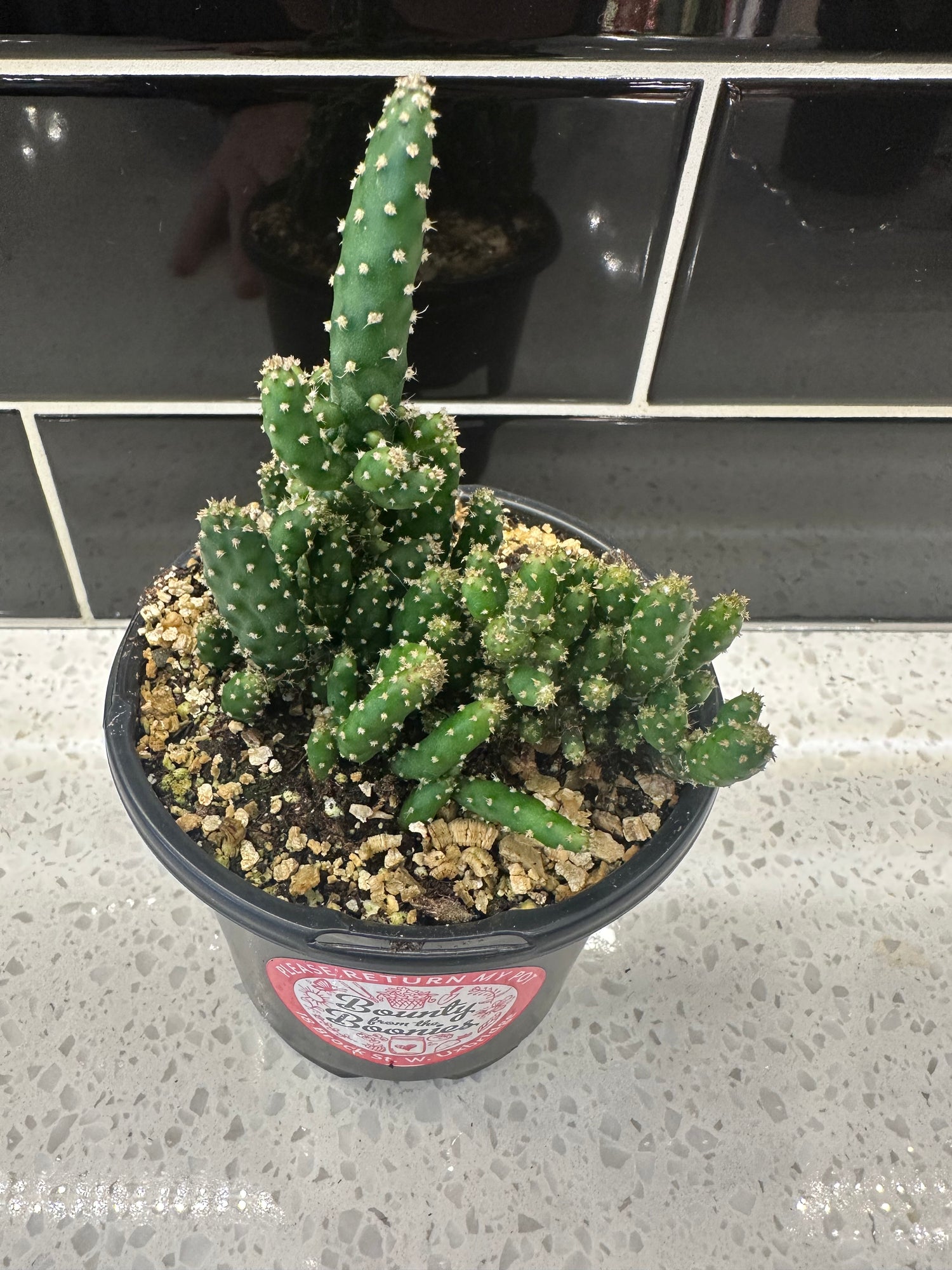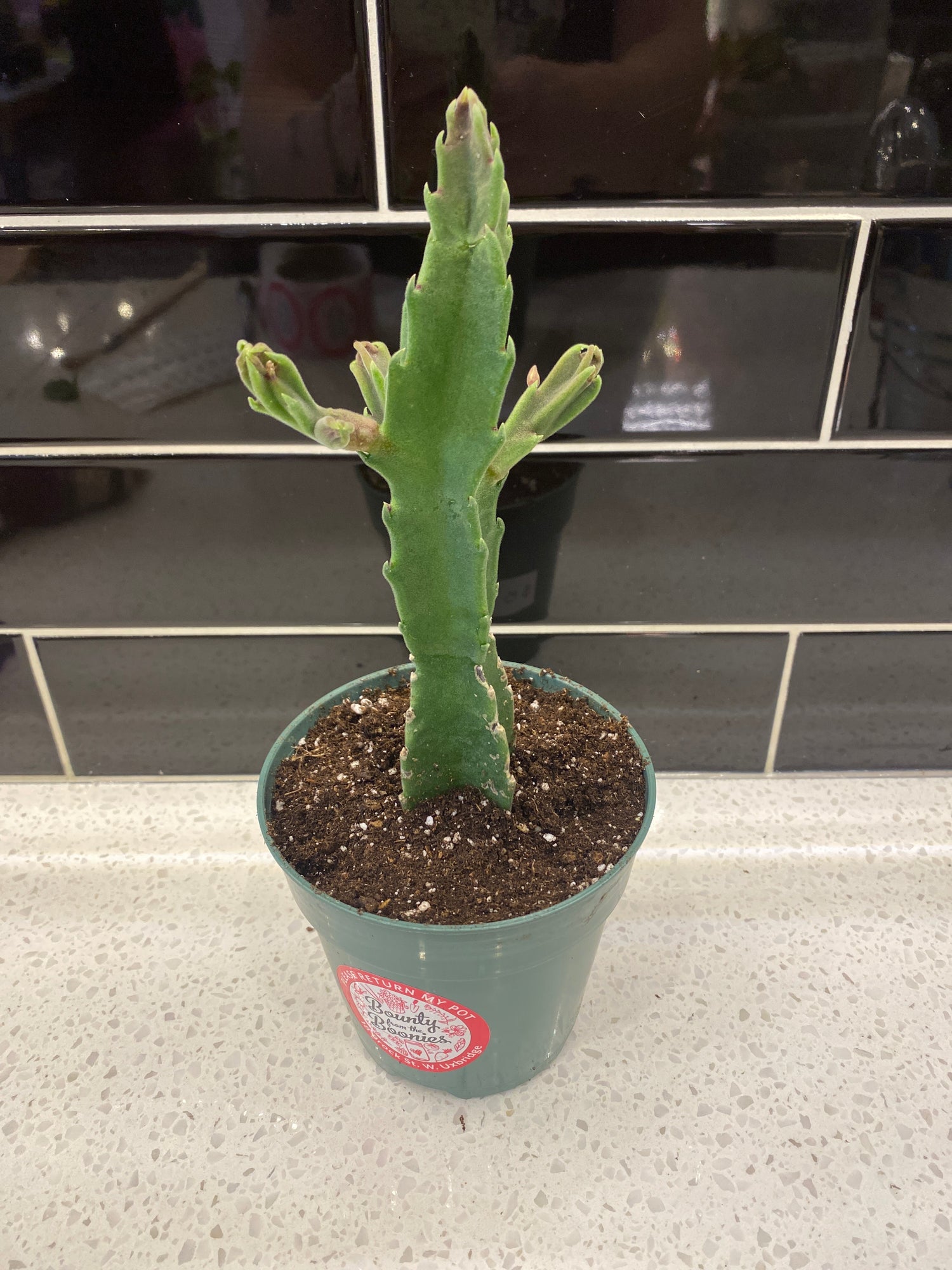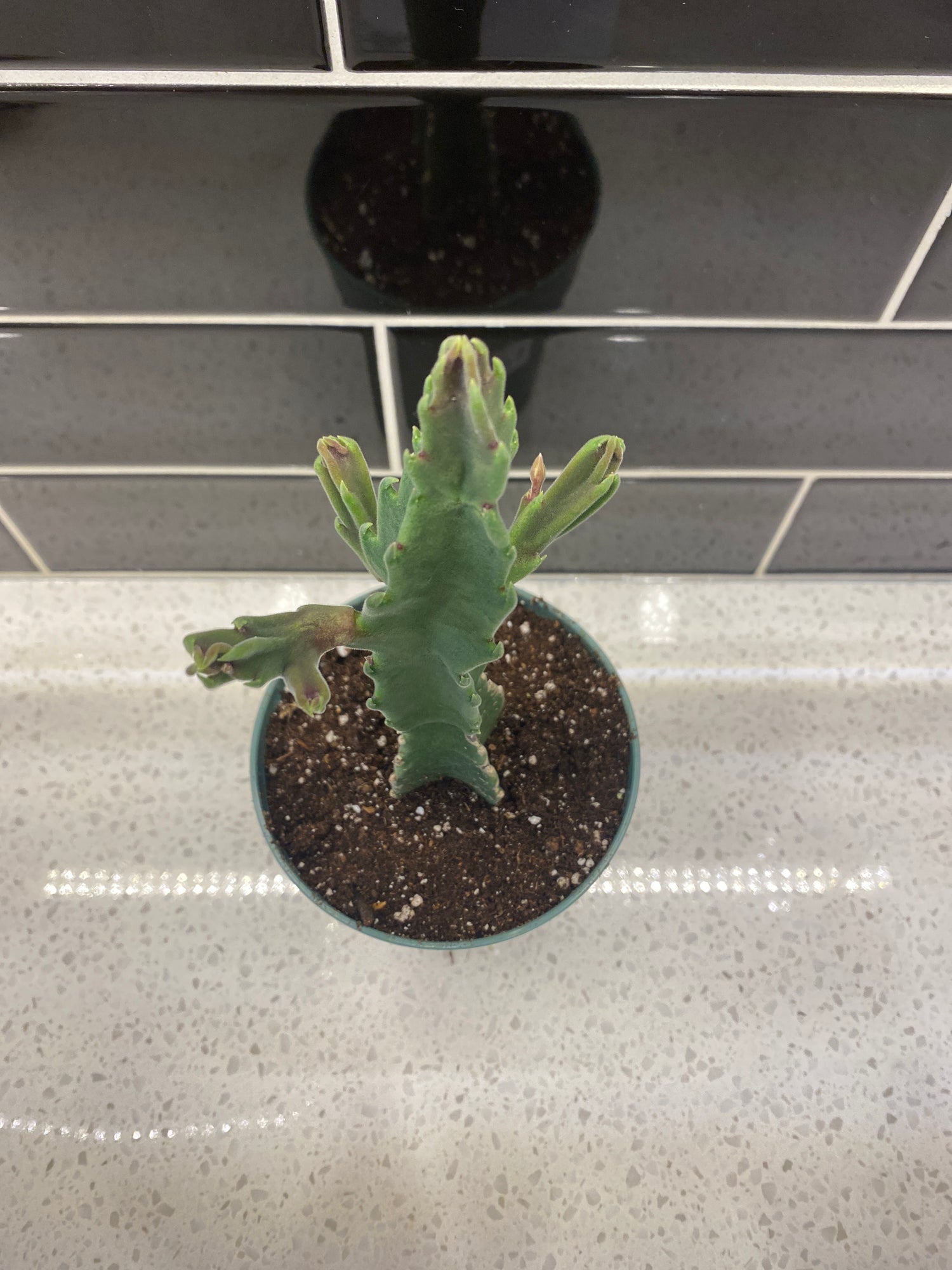Sort by:
27 products
27 products
A weird little succulent that looks like…well…baby toes!
Scientific Name: Fenestraria rhopalophylla
Common Name: Baby Toes
Growth: 2-3 inches tall
Watering: Let dry between watering
Pet Safe: Yes
Care: Intermediate
Light: Bright, indirect light
A strange succulent variety that look a little like brains! Also known as "Lithops" which is derived from the greek word "lithos" (stone) "opsis" (like)...stone like!
Native to South Africa, this quirky little plant is known for its unique appearance. Because they look like small stones, it helps them camouflage against grazing animals.
Scientific Name: Lithops
Common Names: Living Stones
Growth: 1-2 inches tall
Light: Bright indirect light
Watering: (Water from below)
Late Spring to Summer: Only water every 2-3 weeks.
Late summer to early fall: Water once you notice growth happening.
During Dormancy: Stop watering completely, especially during winter and midsummer.
If leaves start to shrivel, add a bit of water to firm them up.
Care: Intermediate
Pet Safe: Yes!
A funky succulent with a spiky look!
Haworthia attenuata, also known as zebra haworthia, is native to Southern Africa. This plant is very slow growing and has a life span of up to 50 years! In the wild, these plants grow in very harsh conditions and can be found buried in sand.
Scientific Name: Haworthia attenuata
Common Name: Zebra Haworthia
Growth: 1-6 inches in height
Light: Bright indirect light
Watering: Let dry out between watering
Pet Safe: Yes
Care: Easy
MA jade plant variety with stripes of green, white, and pink!
These star-shaped flowers have pink overtones appear in showy clusters at the ends of the branches. This Jade plant is native to South Africa. Also known as "Cassula Ovata", this Jade plant grows on dry, rocky hillsides.
Scientific Name: Cassula Ovata
Common Name: Jade
Growth: 2-4 Feet indoors
Light: Bright indirect light to full sun
Watering: Let dry out between waterings
Pet Safe: No
Care: Easy
This plant is native to Southern Africa. If you look really close, you can see a cucumber pattern. This cool plant can have babies that grow off the stem, under the soil, and develop the dark green and silver coloration once exposed to the light. Ideally, place the pickle plant near a south or west-facing window that receives a few hours of direct sunlight per day.
Scientific Name: Kleinia Stapeliiformis
Common Name: Pickle Plant or Candle Stick Plant
Growth: 10 inches in length and 0.8 inches in thickness
Light: Bright, Indirect light
Watering: Let dry out between watering, water sparingly
Pet Safe: Yes
Care: Easy
The Haworthia Cooperi grows in clumps of small rosettes of tiny, fleshy, light green leaves. One of the interesting features about this plant is that the leaves have transparent streaks around their tips. Originating from the arid regions of South Africa. It grows in the wild, often in the shade of rocks and other vegetation to protect its delicate, translucent leaves from the intense sun.
Scientific Name: Haworthia Cooperi
Common Name: Haworthia Cooperi
Lighting: 4-5 hours of bright indirect light in the morning sunlight per day
Watering: When the soil is completely dry, give it a good soak
Growth: 2-4 inches
Pet Safe: Yes
Care: Easy
Easy to care for Aloe Vera are great as a window plant. Cut open one of their branches and use it to soothe sunburns and other burns. Originating from the northeastern part of the Arabian Peninsula. When this plant reaches maturity, it can produce pretty little yellow, red, and orange flowers!
Scientific Name: Aloe barbadensis miller
Common Name: Aloe Vera
Growth: Can grow 8-10 inches in four years.
Light: Bright, Indirect light
Watering: Let soil dry out before watering again.
Pet safe: No
Care: Easy
This funny succulent has leaves that look like pickles!
This quirky little guys is native to South Africa. In the Spring and Summer this plant can produce cute little daisy-like flowers. But if yours doesn't flower, the appeal and beauty of the pickle plant is all due to its cute, funny-looking leaves. Guaranteed to start a conversation with other plant lovers.
Scientific Name: Delosperma echinatum or Kleinia stapeliiformis
Common Name: Pickle Succulent, Stapelia Stemmed Senecio, Stapelioid Kleinia, Trailing Jade, Spider Plant, Inch Worm, Candle Stick, Candle Plant
Growth: A maximum height of 18 inches (45 cm).
Light: Bright indirect
Watering: Only when soil has completely dried
Pet Safe: Yes
Care: Easy
This Peperomia variety has lovely trailing stems than make if perfect for a hanging pot. Being native to South America these plants enjoy a humid environment, or a good misting. They like bright indirect light as direct sunlight can scorch leaves. The bright green leaves, reminiscent of beetle shells, are sure to add a pop of colour to your home!
Scientific Name: Peperomia Angulata
Common Name: Beetle Peperomia
Growth: 2-3 ft length
Light: bright indirect
Watering: Water when top layer of soil is dry, likes to be misted
Pet Safe: Yes
Care: Easy
Treat me right and I'll bloom twice a year for you. I come in a variety of colours. A Christmas Cactus is a popular, easy-to-care-for houseplant known for it's vibrant winter blooms. It is native to the shady, humid rainforests of Brazil.
Scientific Name: Schlumbergera
Common Name: Christmas Cactus, Holiday Cactus
Light: Bright, indirect light
Watering: When top two inches of soil is dry
Growth: Up to 2 feet in width
Pet Safe: Yes
Care: Easy
Medusa Head Cactus has thick stems that resemble snakes on Medusa's head. This plant needs well draining soil to prevent root rot. Once it reaches a certain size, this can produce pups on the ends of older arms. After a time, these pups can root on their own. The arm it grows off of rots and the pups roll away to root on their own. If they are cared for, you can end up with a greenhouse full of them!
Scientific Name: Euphorbia flanaganii and Euphorbia caput-medusae
Common Name: Medusa Head Cactus
Growth: It can grow as tall as 8 inches and can spread over several feet in diameter!
Light: Bright, Indirect light
Watering: Allow soil to completely dry out
Pet safe: No
Care: Easy
Prized for its grey-green, paddle-shaped leaves with purple spots that intensify with more sun. Native to South Africa, the Calico heart plant is slow growing and a low maintenance plant.
Scientific Name: Adromischus Triiflorus
Common Name: Calico Hearts
Light: Bright, indirect light
Growth: 2- 6 inches tall
Watering: Let dry between watering
Pet Safe: Yes
Care: Easy
Also known as Wax Plants, hoyas are collectible tropical succulents native to Asia + Australia, and have a cult following! Their compact little flowers are highly fragrant!
Scientific Name: Hoya australis ssp. tenuipes 'Lisa'
Common Name: Hoya Lisa, Wax Plant Lisa, Porcelain Flower
Light: Low-medium light
Growth: Vining up to 3 ft long; requires a trellis or hanging planter
Watering: Let soil almost completely dry out between watering
Pet Safe: No
Care: Easy
Originating from South Africa, this Jade is known for its easy care, low maintenance qualities. One of most popular succulents around!
Scientific Name: Crassula Ovata
Common Name: Jade, Lucky Plant, Money Tree
Growth: about 2 inches of height per year indoors
Light: Bright indirect light to full sun
Watering: Let dry out between waterings
Pet Safe: No
Care: Easy
Native to South America, this cactus is a slow-growing, dwarf prickly pear cactus that forms unusual, shrub-like, or tree-like shapes and requires bright light, good drainage, and frost protection, but can tolerate slightly more frequent watering than some other cacti.
Scientific Name: Opuntia monacantha
Common Name: Maverick Cactus
Growth: very slow
Light: Bright light
Watering: Once soil has completely dried out, then soak
Pet Safe: Yes
Care: Easy
The starfish Cactus is a South African succulent with star shaped flowers that smells like a dead animal to attract flies for pollination. Don't be turned off by the smell, the flower only lasts a day or two then falls off after shrivelling. Though it's called a Cactus, it's not a true cactus.
Scientific Name: Stapelia Gigantea
Common Name: Starfish Cactus
Growth: Can grow 3-6 feet long
Light: Bright, Indirect sun
Watering: Let the soil dry out completely before watering
Pet Safe: Yes
Care: Easy
Enjoy a prickly friend to add interest to your space!
This Cactus is native to South Western United States and Mexico. They love their hillsides and deserts. Needless to say, this plant loves sunlight and dry conditions. If in the right conditions, this prickly plant can produce beautiful flowers!
The name comes from the Ancient Greek (echinos), meaning "sea urchin", and the Latin meaning "candle".
Scientific Name: Echinopsis terscheckii
Common Name: Pachycereus Pringlei / Hedgehog Cacti
Growth: They Can grow up to 23 inches
Light: Bright indirect light to full sun
Watering: Let dry out between watering, water sparingly
Pet Safe: Yes (be careful of the spines!)
Care: Easy
Monanthes polyphylla is a small, low growing succulent native to the Canary Islands. It's known for forming dense clumps of tiny rosettes. They have small green, cylindrical leaves that often develop reddish hues in good light. They can also bloom star-shaped flowers in yellow, orange, or purple.
Scientific Name: Monanthes Polyphylla
Common Name: Monanthes Polyphlla
Light: Bright, indirect light
Growth: 12 cm tall
Watering: Let dry between watering
Pet Safe: Yes
Care: Easy

